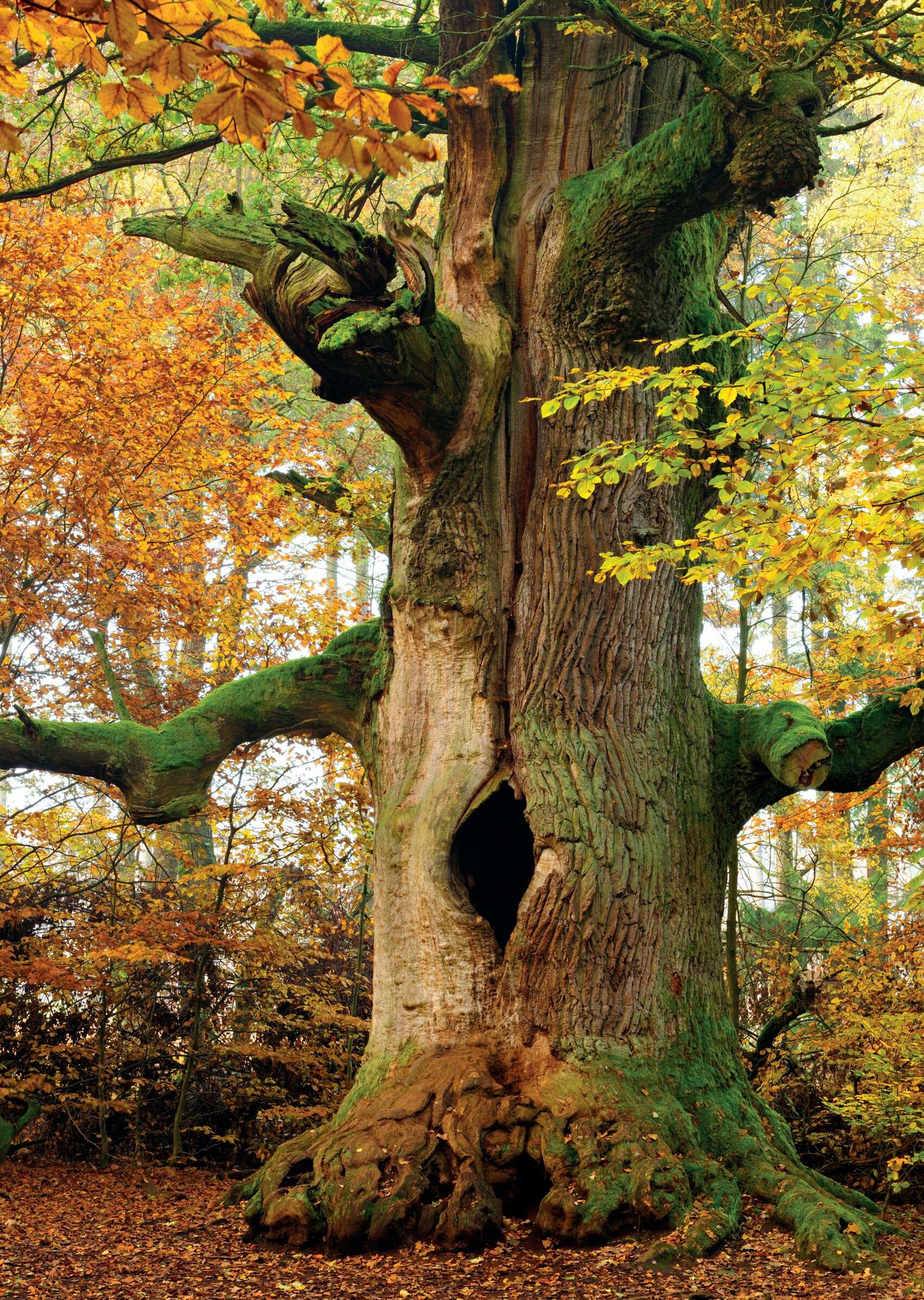

Welcome Nature's recovery in action
river corridor habitats through our Love Your River Stour project, and a study to understand where one of our most precious habitats, ancient woodland, survives. These are, however, just a selection of the Wildlife Trust’s work, and your support has enabled us to deliver over 700 biodiversity projects at 214 sites in the last 10 years.
In A Wilder Birmingham and Black Country - our strategy for 2022-2030, we’ve set out ambitious plans to build on these successes by helping to put nature into recovery and for nature to be playing a central and valued role in helping to address local and global problems. It is now indisputable that the climate and ecological emergencies are inextricably linked, and that reversing the dramatic decline in nature is critical in helping to address a number of challenges faced by society on a global-scale.
It’s great to be able to share with you in this edition of Wildlife magazine some of our work to protect and restore nature. Our team of colleagues and dedicated volunteers work tirelessly to provide habitat for wildlife and places for people to enjoy. Read on to learn about projects including the management of a rare wetland habitat at Moseley Bog, the creation of new
In future editions of Wildlife magazine, we will be telling you more about how we’re putting this into action in Birmingham and the Black Country. Our nature conservation work has always been informed by evidence which helps us make often-difficult decisions about what is the right thing to do in the right place: for example, surveying a grassland
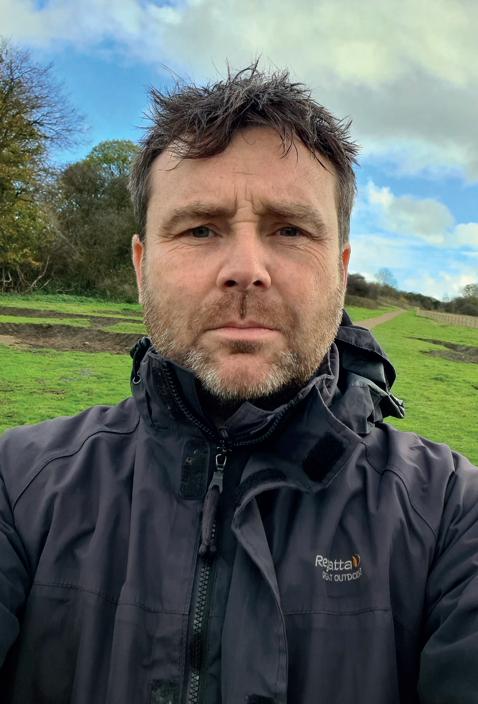
Birmingham and Black Country Wildlife Trust

Wildlife is the membership magazine for Birmingham and Black Country Wildlife Trust
Email comms@bbcwildlife.org.uk
Telephone 0121 523 0094
Address Centre of the Earth, 42 Norman Street, Birmingham, B18 7EP Registered charity number 513615
Website bbcwildlife.org.uk Facebook.com/WTBBC Twitter.com/WTBBC Youtube.com/BBCWildlifeTrust Instagram@bbcwildlifetrust
before planting trees, or removing the weir that will have the most benefit for migratory fish. Now, however, we are also working to understand what other benefits our work can deliver, and are designing projects that include what are known as ‘nature-based solutions’ to problems such as flooding, pollution, the impacts of climate change and poor mental health.
An example of this is our project M5 Clean Rivers. We know that our watercourses are severely impacted by pollution washed into them from roads via drains. M5 Clean Rivers will create new wetland habitats next to the M5 which, as well as providing habitat for waterfowl, freshwater insects and native wildflowers, will intercept water flowing from the motorway and remove some of this pollution before it reaches rivers and streams such as the Bourne Brook and Illey Brook.
Thank you for your continued support and we look forward to telling you more about our nature recovery and naturebased solutions work in the future.
Simon Atkinson Head of ConservationWherever you are in the UK, your Wildlife Trust is standing up for wildlife and wild places in your area and bringing people closer to nature.
This Magazine is printed on FSC material and is fully recyclable.
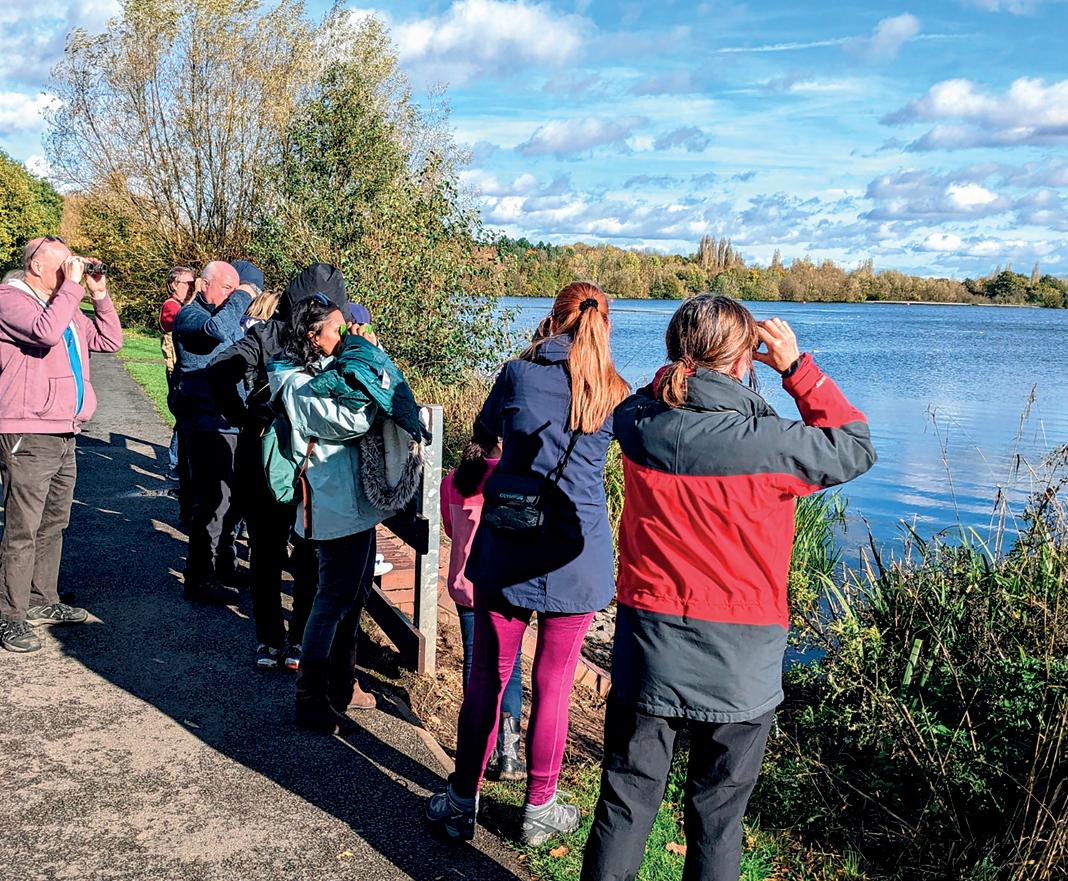
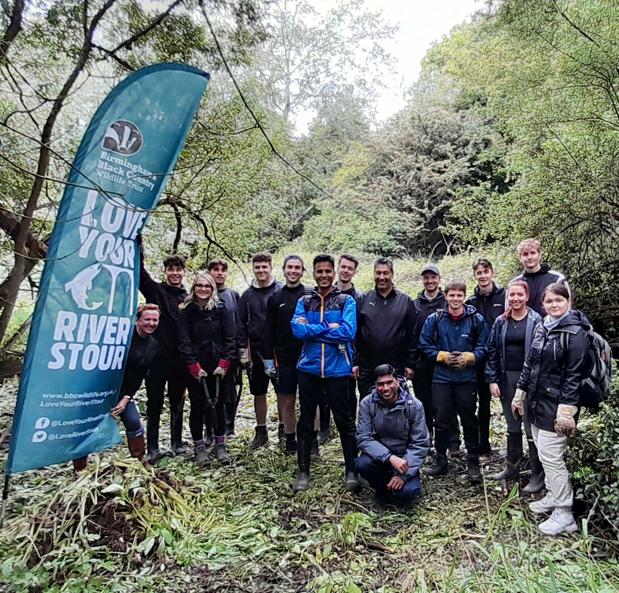
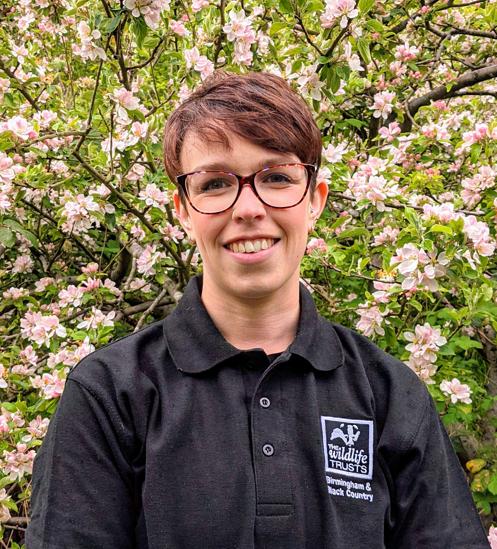
What to Spot: Ancient Woodlands
BY ANDY SLATER, BIODIVERSITY INFORMATION OFFICERThe arrival of the Black Death in 1349 brought a sudden reduction to wide scale woodland clearance, meaning that any woods surviving in 1350 had a good chance of surviving the next 500 years to become the Ancient Woodlands that exist today.
Wood Anemone (Anemone nemorosa)
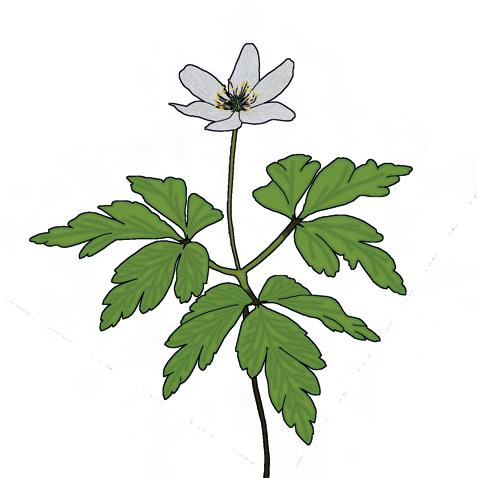
Wood anemone is a member of the buttercup family (Ranunculaceae) whose white star-shaped flower can be seen flowering from March to May. Its leaves have three visible lobes with long stalks. If Wood Anemone is found in abundance in a woodland, it is fair to assume that the woodland is ancient, as this species is very slow-growing as it spreads via rhizomes (underground stems) meaning it rarely becomes easily established in more recent woodlands.
Not to be confused with: Wood-sorrel
The
History of Woodland in the UK
Woodland cover and composition in Britain has been changing continuously since the last ice age ended over 10,000 years ago. After the glaciers retreated, trees slowly began to colonise from the south, including birch, aspen and sallow. These were eventually followed by other species such as oak and lime, and by about 4500BC these species had begun to form expansive wildwoods. In the Midlands this wildwood would have likely been dominated by lime and, rather than a continuous closed canopy, would have likely been interspaced with open areas of grassland maintained by the grazing and browsing of wild herbivores, such as aurochs and red deer.
With the beginnings of agriculture came largescale woodland clearance by humans and, as a result, about half of England had already ceased to be wildwood by 500BC. Much of the remaining woodlands, which were often growing on steep slopes, difficult soils or uncultivable terrain, were managed for timber and fuel production through coppicing. By 1086 only about 15% of England was woodland or wood-pasture, compared to about 10% today.
Why are Ancient Woodlands Important?
The longevity of Ancient Woodlands mean that they support a large number of different plant, fungi and animal species, which form unique and complex communities, including many species which are not found in any other habitat types. One reason for this is because many of the species that thrive in Ancient Woodland are highly specialised and slow to colonise new areas. This means that if you spot any these species – known as Ancient Woodland Indicators – growing in a woodland then it may indicate that the woodland could be ancient.
Ancient Woodland Indicator Species
One of the most well-known examples of a species you might find in Ancient Woodland is, of course, Bluebell, but this article focused on a range of other Ancient Woodland Indicator Species that you might spot in Birmingham and the Black Country:
Dog’s Mercury (Mercurialis perennis)
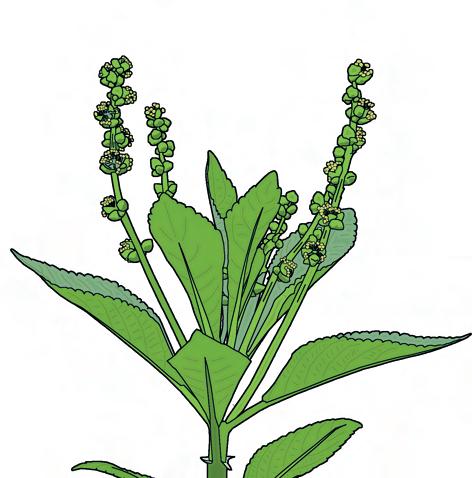
Dog’s mercury is a member of the spurge family (Euphorbiaceae) and can be found carpeting the floor of Ancient Woodlands. It bears clusters of small, greenish flowers which can be seen from February to April. Its fresh green leaves are spear-shaped, toothed and are carried on upright stems Dog’s mercury produces a foul and rotten smell and is poisonous if ingested.
Not to be confused with: Good-KingHenry – one of the ‘true mercuries’ which is similar, but has triangular to diamondshaped leaves with a pair of broad pointed lobes near the base.
Ancient Woodland is one of the most important and irreplaceable habitats that we have in Birmingham and the Black Country.
Wood-sorrel (Oxalis acetosella)
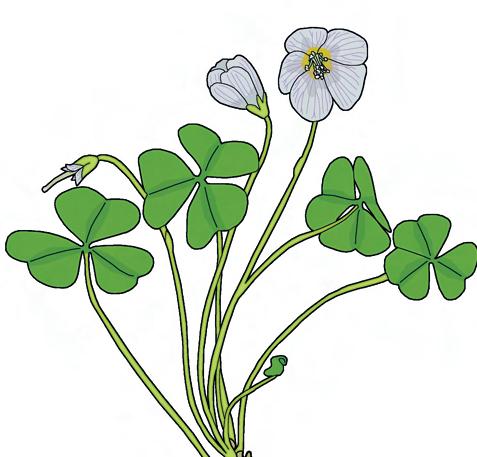
Wood-sorrel is a member of the woodsorrel family (Oxalidaceae) and has flowers with five white petals, veined in lilac or purple, which close as the light fades. It flowers from April to May and it has distinct trefoil leaves resembling a ‘shamrock’. The leaves act as a ‘weathervane’ as they fold up before and during rain and when it gets dark. Woodsorrel was used in the past for treating scurvy due to its high vitamin C content.
Not to be confused with: Wood Anemone
Wood Speedwell (Veronica montana)
Wood speedwell is a short, often sprawling, hairy plant and is a member of the plantain family (Plantaginaceae). Its pale lilac flowers can be seen from April to July. It has hairy and round stems, with deeply toothed and long stalked pale yellowy green leaves.
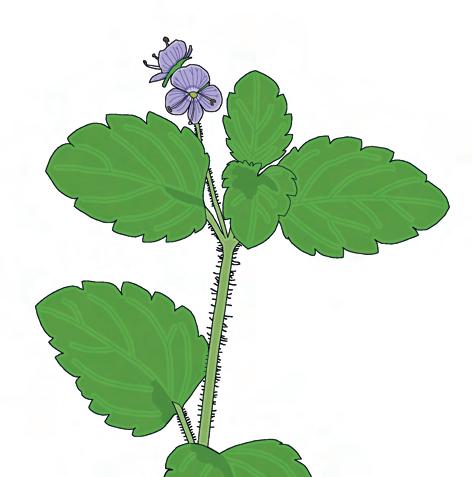
Not to be confused with: other speedwells, particularly Heath Speedwell and Germander Speedwell, both of which don’t have stalked leaves.
Ancient Woodland in Birmingham and the Black Country
‘Ancient Woodland’ is considered to include areas that have been continuously wooded since at least 1600, as this is when detailed maps first became available.
Some good examples of Ancient Woodland sites in our area include Balaam’s Wood in Birmingham, Cuckoo’s Nook in Walsall and Alder Coppice in Dudley.
In Birmingham and the Black Country we have a fairly good idea of where most of our Ancient Woodlands are due to the Ancient Woodland Inventory which was compiled by the Nature Conservancy Council (NCC) between 1981 and 1992. This inventory helped to identify potential ancient woodland sites in our area, based on a combination of old maps, documentary evidence and ground surveys.
Thanks to a new project lead by Natural England and supported by a Woodland Trust grant, EcoRecord are currently involved in constructing a new version of the Ancient Woodland Inventory. This will, for the first time, include sites smaller than 2 hectares and make use of additional information sources including maps and reports that were unavailable at the time of the original inventory.
Opposite-leaved Golden-saxifrage (Chrysosplenium oppositifolium)
Opposite-leaved golden saxifrage is a member of the saxifrage family (Saxifragaceae) and is a moisture-loving plant that is found near damp or wet places, such as by the side of shady streams and in wet woodlands. It is a creeping perennial that forms mats of golden-green flowers between April and June. It has paired, rounded leaves which are opposite each other.
Not to be confused with: Alternateleaved golden saxifrage, which can be distinguished by the leaves being alternate up the stem.
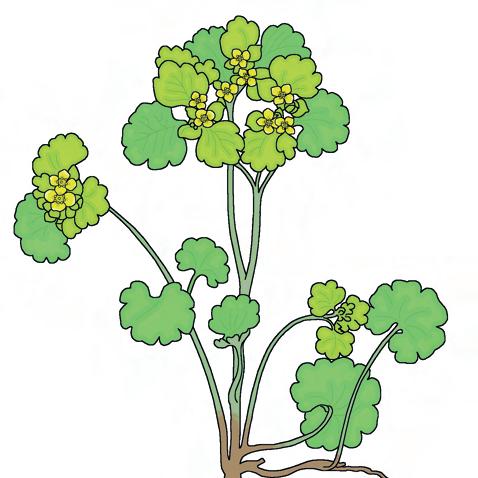
Yellow Archangel (Lamiastrum galeobdolon ssp. montanum)
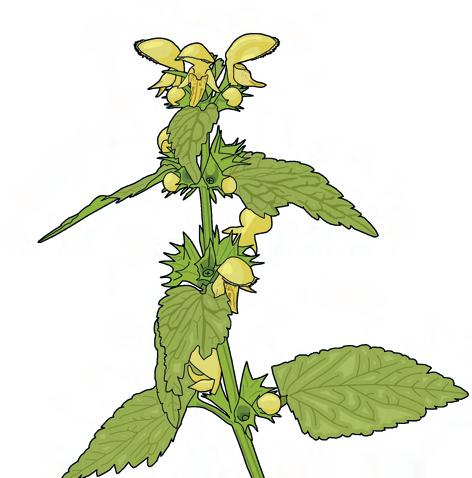
Yellow archangel is a member of the mint family (Lamiaceae) and is a strongsmelling, hairy plant, often found growing in patches in woodland. Its flowers, which can be seen from April to July, are bright yellow with brownish markings, with a hooded upper lip and a three-lobed lower lip. Its leaves are toothed and nettle-like and are borne in pairs on square stems.
Not to be confused with: Variegated Yellow Archangel (Lamiastrum galeobdolon ssp. argentatum) which is an invasive non-native garden escapee, with silvery markings on the leaves.
This work will hopefully identify new Ancient Woodland sites, and greatly improve our knowledge of the amount of Ancient Woodland that we have in Birmingham and the Black Country. You can help us with this by keeping an eye out for any of the Ancient Woodland Indicators above and letting us know!
Please submit your wildlife photos via
• iNaturalist
• Tw itter @EcoRecording
• Email enquires@ecorecord.org.uk

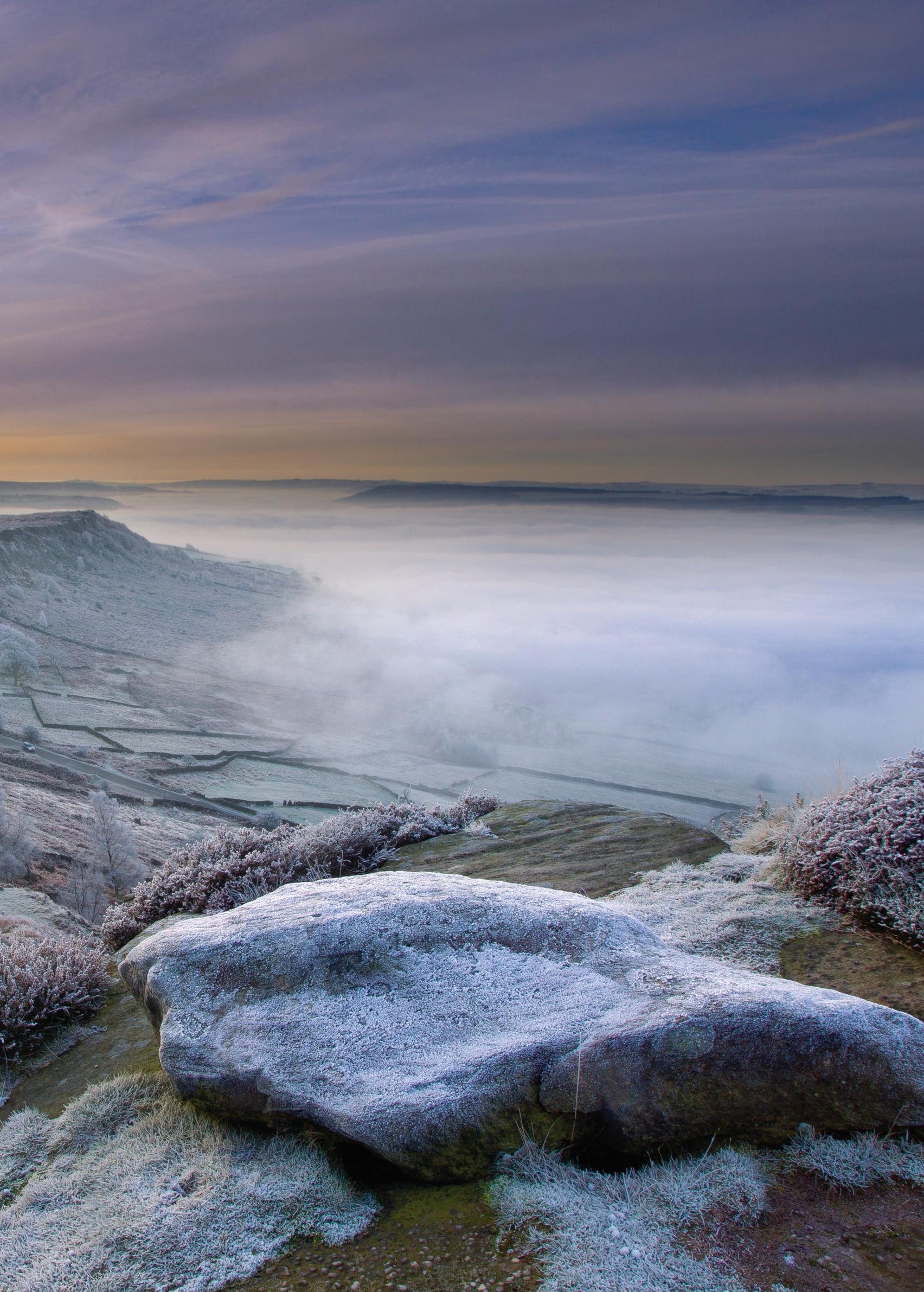
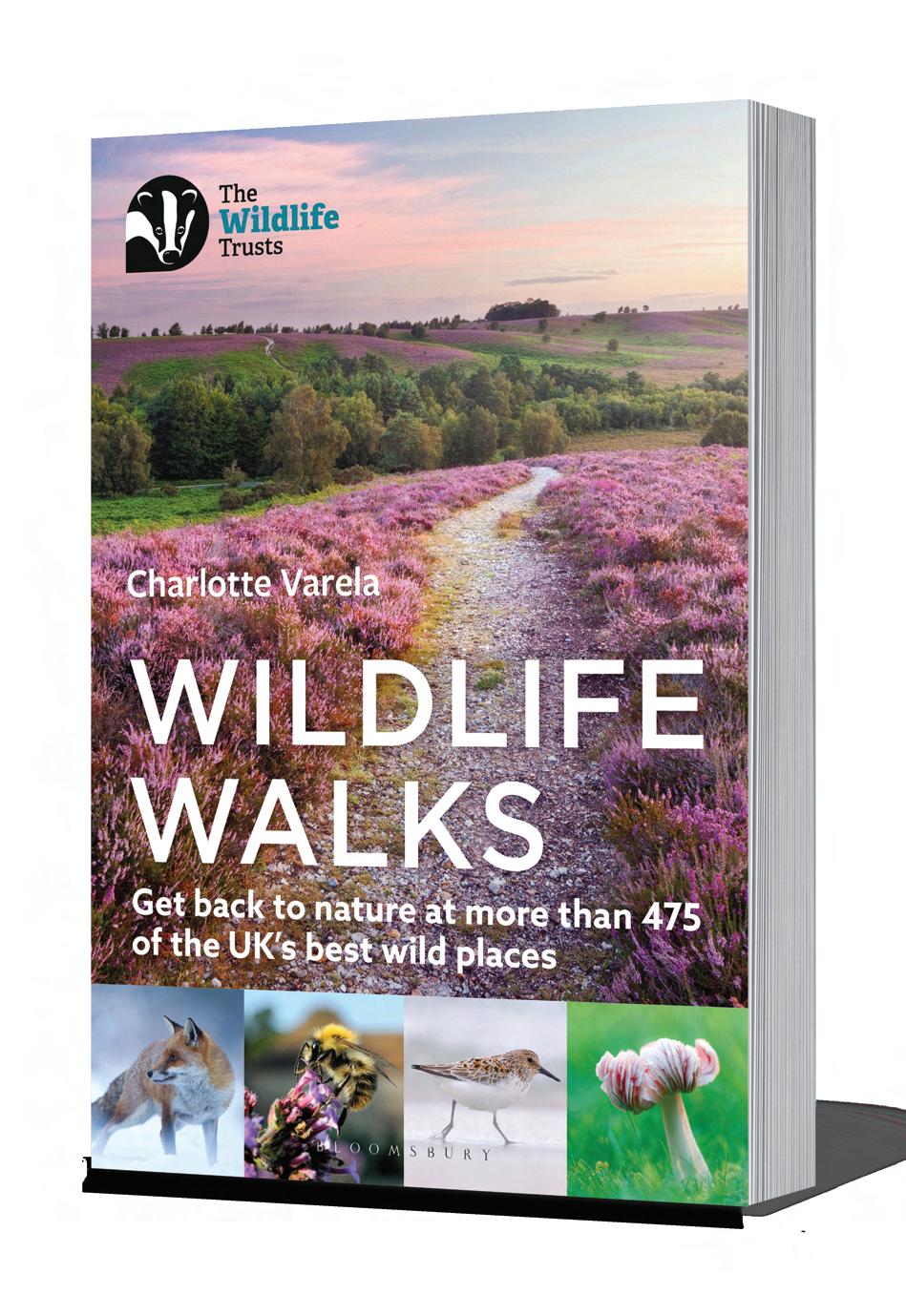
Don’t Send Me A Card
We’ve partnered with Don’t Send Me a Card so you can send exclusive e-cards which not only support our work, but are far more sustainable than a traditional card. You won’t need to find a stamp or a postbox, and an e-card won’t get lost in the mail! Simply visit shorturl.at/abemy
A Year in Wildlife Poster
Our limited edition Year in Wildlife Poster will help you stay wild all year-round. For £10 we will post you an A2 poster and also send you a monthly email throughout 2023 with tips on what to spot and how to take action for wildlife! To order your poster, visit: bbcwildlife.org.uk/Poster
Gi Membership
The gift that keeps on giving. Buy your loved one a gift membership and you’ll receive a year in Wildlife book worth £12.99* which you can either hand over, or keep as a gift for yourself!

Purchase required by 15 December** to allow for Christmas Delivery
Visit bbcwildlife.org.uk/JoinUs
Online Shop
We have a great range of gift ideas available to buy in our online shop.
Visit bbcwildlife.org.uk/shop or refer to the back cover of this magazine for more information.
Donate in the Name Of…
Perfect for that person who just has everything, or is otherwise tricky to buy for. For £20, you can make a donation to support our work in the name of your recipient, and we will send them a handwritten Christmas Card, with your choice of Wildlife Origami kit. You can choose from Ladybirds, Dragonflies, Rhinoceros Beetles or Bees.
Visit bbcwildlife.org.uk/shop

Festive Giving
Diversity within the Environment Sector
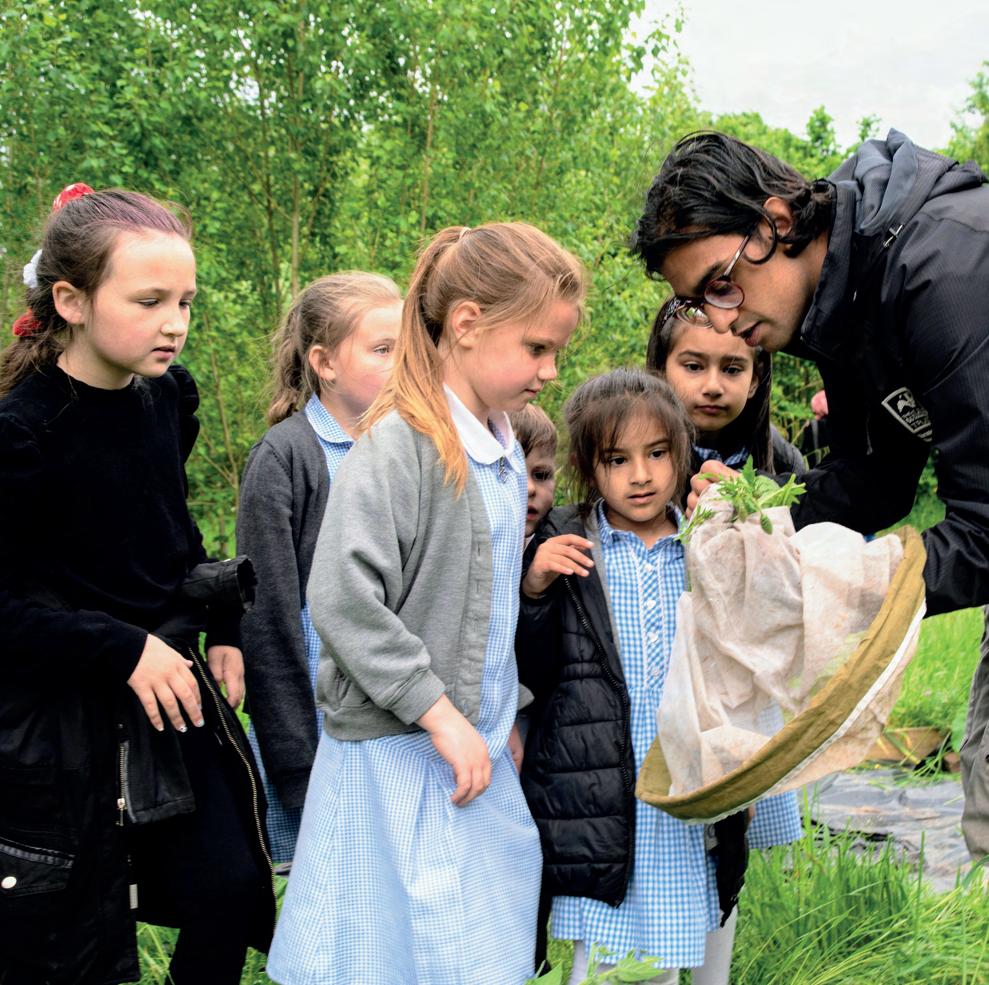
Recently we contributed data along with over forty other environment charities to a new report looking into the barriers to ethnic inclusion within the environment sector. Full Colour, who undertook the research, have worked with Wildlife and Countryside Link and its members to create a Route Map in response to their findings. This Route Map provides step by step advice to create greater diversity over a 5-year period. The Wildlife Trusts will be using sections of this route map to strengthen our journey to greater ethnic diversity that we have already started. Read the report here: wcl.org.uk/changing-the-worldfrom-within.asp
Thanks to our recommendation which showed the site to be of high value to wildlife, Dudley Metropolitan Borough Council have designated Corbett Meadows in Amblecote a Site of Importance for Nature Conservation (SINC) which should help it to be protected by the planning system against a current development application. This site is the only substantial area of remnant historic countryside in an otherwise urban area!
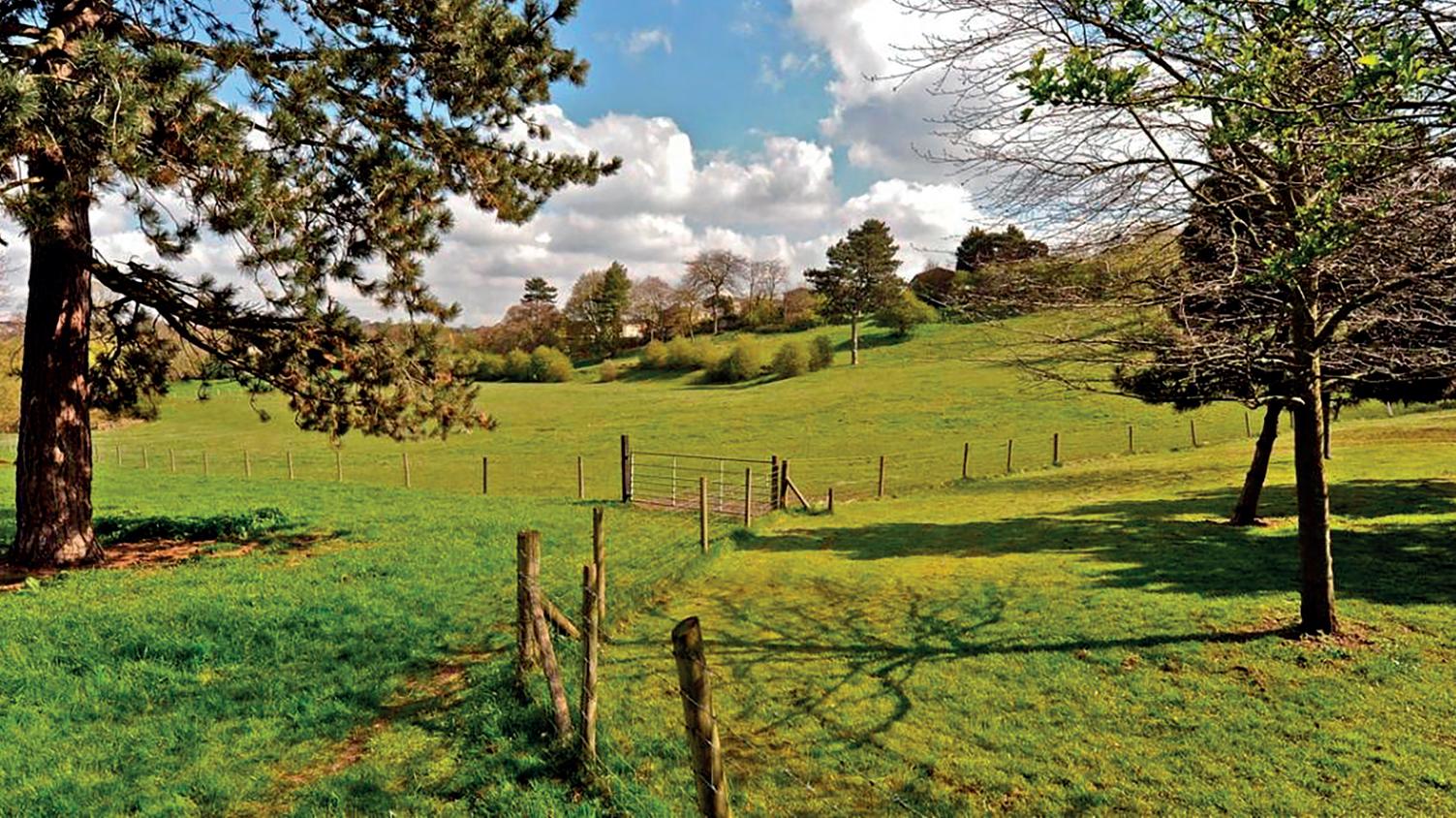
Wild Walk Week 2022
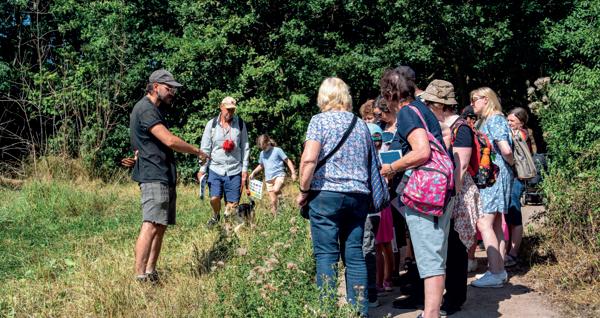
Wild Walk Week has drawn to a close for another year, and we're pleased to say that a fantastic 178 people took part in 2022, whether by joining one of our guided walks, taking on our Sutton Park orienteering challenge or by stepping out on a wild fundraising walk of their own. So far a total of £1,185 has been raised! Thank you to everyone who joined us throughout the week – we can’t wait for next year!
New Recruits
It’s an exciting time at the Birmingham & Black Country Wildlife Trust, with lots of new colleagues joining our team this winter! We're pleased to welcome on board Alex Lane as Senior Biodiversity and Planning Officer and Aisha Mahmood as Youth Action for Nature Manager and we're currently recruiting for an Education Manager, Education Officer, Nature Recovery Manager, Nature Recovery Officer, Volunteer Co-ordinator and Membership Fundraiser. These new recruits will expand our Education and Engagement, Conservation and Fundraising teams, furthering our work for wildlife, wild spaces and people across the region.
Defend Nature
Thank you to everyone who has continued to support The Wildlife Trusts’ #DefendNature campaign, keeping a focus on the importance of the natural world in the face of changing governments and changing priorities for wildlife and wild spaces. Grave threats still remain, such as The Retained EU Law Bill, which could mean 570 laws which protect the wild world around us are revoked by the end of next year. You can add your voice to ours in opposition to these plans by heading to bbcwildlife.org.uk/DefendNature
Works Underway at Sedgley Beacon
We’re delighted to be working on a significant habitat enhancement project with Dudley Metropolitan Borough Council at Sedgley Beacon. Phase one of the works are now complete and include new entrances, paths and fencing (creating 10,000m2 of new public open space!), a new
Youth Action for Nature
We’re delighted to have hired our new Youth Action for Nature Manager, Aisha Mahmood! Aisha will be leading a brand new, two year project to empower young people in the region to build a strong relationship with the natural spaces around them, and in turn, to be able to take action to protect those spaces and nature as a whole. This project is possible thanks to funding from National Lottery Heritage Fund for the UK-wide Nextdoor Nature programme. We look forward to bringing you updates in future editions of this magazine, and you can find more details about the project and how you, or a young person you know, can get involved at bbcwildlife.org.uk/YouthAction
paddock and wetland scrapes. Further work will see us restoring hedgerows, opening up woodlands to increase biodiversity, clearing scrub from species-rich grassland and creating/improving wildflower grassland! Look out for more updates in the spring magazine.
New Business Partnership
We’re delighted to announce a brand new business partnership with Birmingham County Football Association.

BCFA have chosen the Trust as their Charity of The Year and will be supporting our work through unique fundraising events and inspiring thousands of supporters to take action for nature’s recovery as part of their award-winning Sustainability programme Save Today, Play Tomorrow.
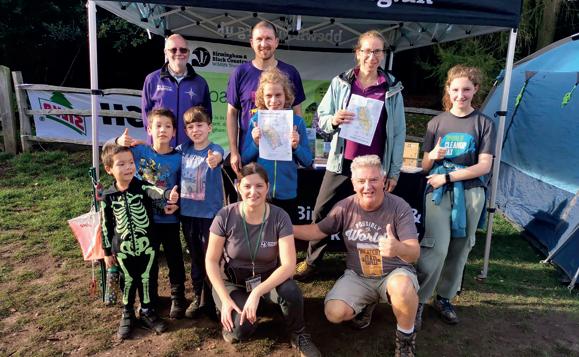
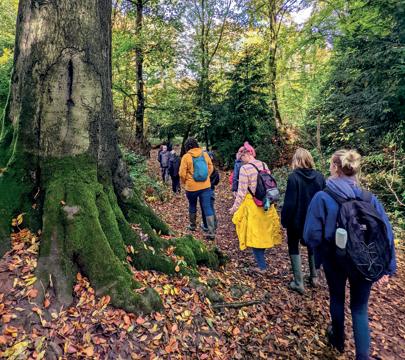
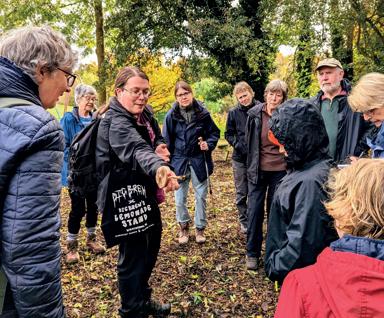
Project update
BY SALLY CLAGUE , SENIOR RIVER RESTORATION OFFICEROur Love Your River Stour (LYRS) Project has been active on the on the ground for almost a year with lots of activity taking place and more planned for the next few months.
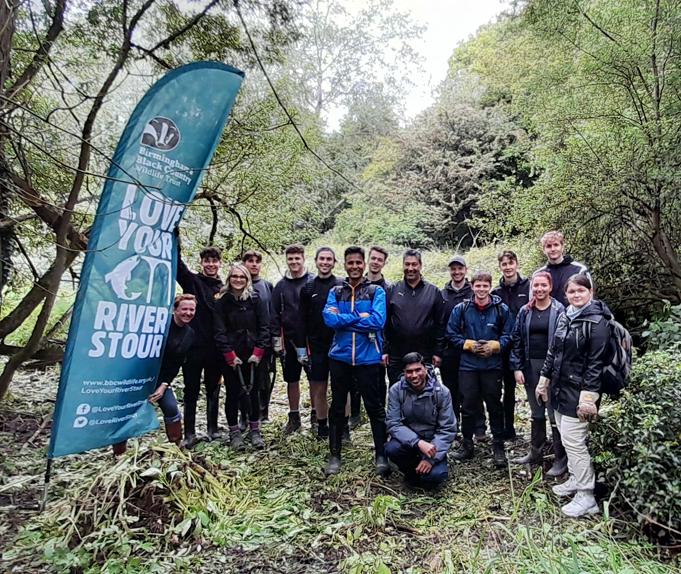
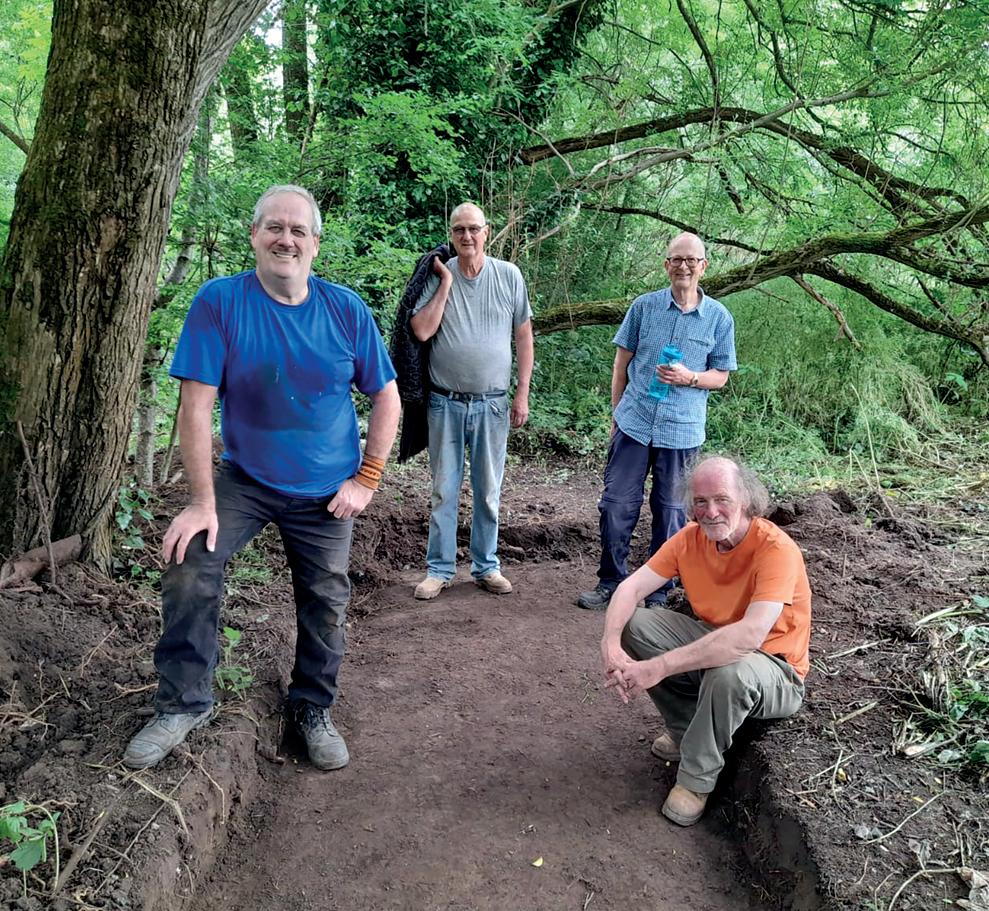
This phase of the project, funded by the Green Recovery Challenge Fund, runs up to spring 2023 and focuses on project sites in Wolverhampton and Dudley. We are working in partnership with the Environment Agency to improve the condition of the River Stour wildlife corridor, including tributaries of the River such as the Smestow Brook, to create and enhance habitats that support a wide diversity of wildlife and flora. As well as increasing biodiversity, the project aims to increase engagement with the river and local green spaces by encouraging local communities to take action to protect it for the future. This includes generating awareness of how even small everyday changes, such as washing cars on gravel or grass, can contribute to improving the condition of the river.
River corridor restoration
Four sites have been the focus for habitat improvement works within the Black Country; Stambermill and Riverside House in Stourbridge, Seth Somers Park in Halesowen and Smestow Valley Local Nature Reserve (LNR) in Wolverhampton. Our dedicated volunteers have supported many elements of these activities at our weekly volunteer days at both Stambermill and Smestow Valley LNR. Throughout the spring and summer, we have been busy clearing pathways, preparing for and spreading green hay, sowing additional wildflower seeds,, clearing bramble and scrub, splitting and spreading existing flora, monitoring aquatic invertebrates and much more! Several years’ worth of silt had buried the pathway at Stambermill, making it treacherous to walk alongside the river through the site. After several sessions and lots of hard work by the volunteers, the pathway is now visible and accessible allowing local residents to explore the site and reconnect with the river.
One of the most enjoyable habitat improvements so far has been the meadow creation and improvement. The grasslands that already existed on the project sites were low in species diversity or had become densely overgrown with bramble. We prepared the sites by digging out the bramble or
cutting and removal of the grass and scarifying the ground to increase seed to soil contact and thus increase the likelihood of successful germination and our volunteers strewed the donor hay, collected from Illey Pastures SSSI in Halesowen. We look forward to seeing the results of these efforts over the next few years when the seed strewn has produced diverse grasslands teeming with a wide variety of wildlife.
Whilst our volunteers have been working hard, we have also had several Wild Experience Day bookings with employees from businesses helping us on these projects. Attendees have removed invasive Himalayan balsam from the riverbank, cleared new pathways, begun excavations on a new pond and removed invasive species from a woodland.
Moving into winter our focus moves onto tree works; we will be thinning woodland areas to allow increased light to reach the woodland floor allowing plants such as bluebell, woodruff, ransoms, primroses and many others to thrive. This activity also enables the introduction of tree species that are missing from the woods, especially species such as rowan, alder buckthorn and guelder rose, all of which provide flowers and fruit, which are beneficial for pollinators and birds. All the species for planting are chosen carefully to reflect those that would be found naturally in the local region to reduce the risk of bringing invasive species or diseases to the area. We also carefully record what has been planted for clarity in the future on what occurred naturally and what was provided as enhancement.
With help from contractors, we will be creating wetland and ponds across all four of the project sites to provide habitats that either do not occur, or occur infrequently, across the site. Adding these niche habitats helps to support a more diverse range of flora and fauna that is perhaps more rare in the area, as well as providing a stepping-stone between other wetland areas creating more connectivity throughout the landscape. Connectivity is key as climate change increases the temperatures; if habitats are not well connected, wildlife cannot move to new areas to find climates that are more suitable. These wetland features will help to provide safe havens for wildlife.
Community Engagement
Helping more people to engage with and learn about the project is key to the legacy of this project, ensuring that the river and the project sites are looked after and appreciated long into the future.
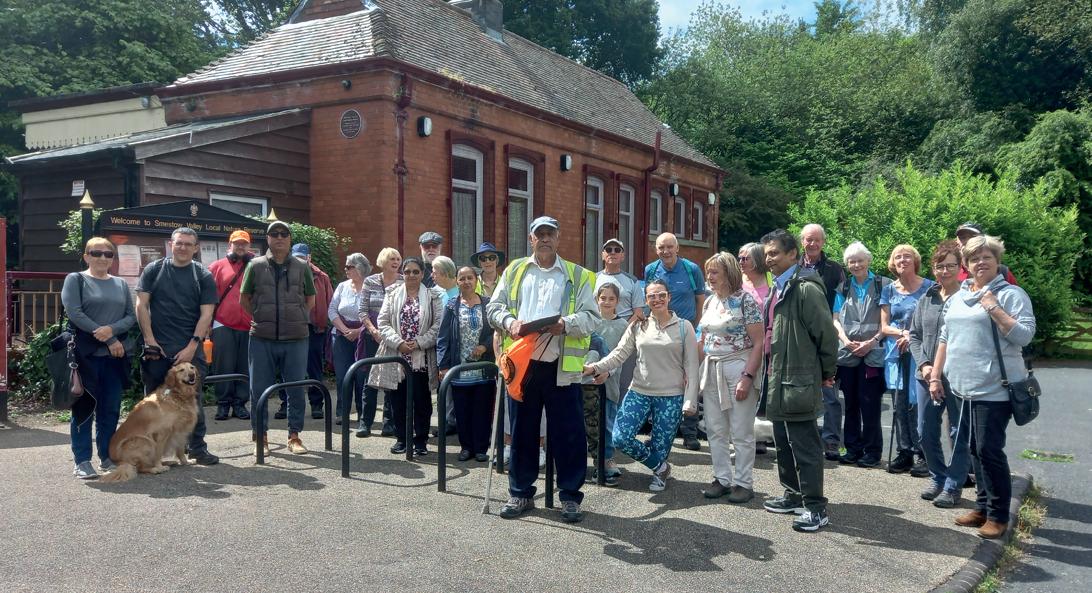
We’ve had a busy summer and you may have seen us along with Sir David Ottenborough, our friendly mascot, at several events including the International Festival of Glass at Riverside House in Stourbridge or the City Nature Challenge Event in Smestow Valley LNR. We have led guided walks at several of the project sites as well as hosting family friendly activities. We’ve also been working closely with local college students who are supporting us by undertaking surveys and practical management sessions. Alongside our community engagement activities, we are also offering workshops and training courses. We are visiting local primary schools, delivering our Stour Rangers workshops to children, helping them to learn about the water system, pollutants and the wildlife that lives on the river. Our Open College Network accredited Level 1 qualification in tools use is open to young people looking to start a career in the environmental sector and a great opportunity to learn practical skills.
Get involved
Events
For details of all upcoming events visit bbcwildlife.org.uk/events or email LYRS@bbcwildlife.org.uk
Survey
Help us understand your views about the River Stour and its tributaries for the chance to win a goody bag worth £45! The survey closes in December so to have your say, visit bbcwildlife.org.uk/LoveYourRiverStour and click the link to the survey
Social Media
Follow the Love Your River Stour project on Facebook @LoveYourRiverStour or Twitter @LoveRiverStour
Volunteer
Join our weekly volunteer sessions to help us improve more river habitats. Find out more and register as a volunteer at bbcwildlife.org.uk/volunteer
Fundraise while you shop
Select us as your cause through your Co-op membership and raise money for the Love Your River Stour project every time you shop. Visit membership.coop.co.uk/causes/73567
Winter Wildlife Gardening
Our gardens all but go to sleep in winter, as plants become dormant and most species are overwintering, but there are still ways to help your garden wildlife.
about wildlifefriendly gardening and the author of Wildlife Gardening for Everyone and Everything in association with The Wildlife Trusts.
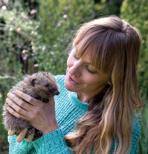

Hedgehogs and amphibians may be tucked beneath a large pile of leaves or in your compost heap, while insects may be sheltering beneath tree bark, in the folds of spent leaves and
seedheads, or amongst leaf litter. Avoid disturbing these habitats until mid-spring as any interruptions could cost valuable energy that isn’t easy to replenish at this time of year; insects may also be vulnerable to fungal diseases if exposed to damp conditions.
Indeed, the best thing you can do for most wildlife at this time of year is to not garden at all! Leave plants in borders to rot down into themselves, avoid clearing leaf litter from your garden’s edges (but do sweep leaves off paths and the lawn), and leave habitats such as log piles and compost heaps intact. If you have a meadow or other area of long grass, leave a ‘buffer zone’ uncut throughout winter, so caterpillars, beetles and other invertebrates can shelter in the thatch.
Of course, not all animals hibernate. Birds battle through the short days and cold nights, searching for food that’s often hard to come by. If you have fruit trees, like crab apples, let windfall fruit remain on the
ground so thrushes such as redwings and fieldfares can help themselves. If the ground isn’t frozen, you can add to your collection of fruit and berrying trees. Now’s the time to buy bare-root trees and shrubs — hawthorn, rowan, holly, apples, crab apples, and pyracantha all produce fruit loved by birds, while birches and alder, along with plants such as Verbena bonariensis, lavender and teasels, offer seeds for a wide range of smaller species.
water, but by regularly topping up your bird bath you will also help birds to clean their feathers and regulate their temperature, vital on cold winter nights.
ILLUSTRATION

Filling supplementary feeders benefits smaller species like tits, which need to feed almost constantly in the daylight hours. Calorie-rich food such as fat balls, sunflower hearts and peanuts gives them the energy they need to shiver to keep warm at night. Leave scraps of seed at the back of borders for ground-feeding species like wrens. And don’t forget water — not only do bird baths provide drinking
Do make sure you keep bird baths and feeders clean, as the number and variety of birds visiting them can spread diseases. Regular cleaning can help keep your garden birds healthy.
Moseley Bog maintain the fen
BY JAKE WILLIAMS, SENIOR NATURE RESERVES OFFICERThe open area of reeds deep in the centre of the wet woodlands, which inspired the site’s name, is a fen habitat fed through groundwater, which provides a home to a variety of vegetation, invertebrates, amphibians and birds.
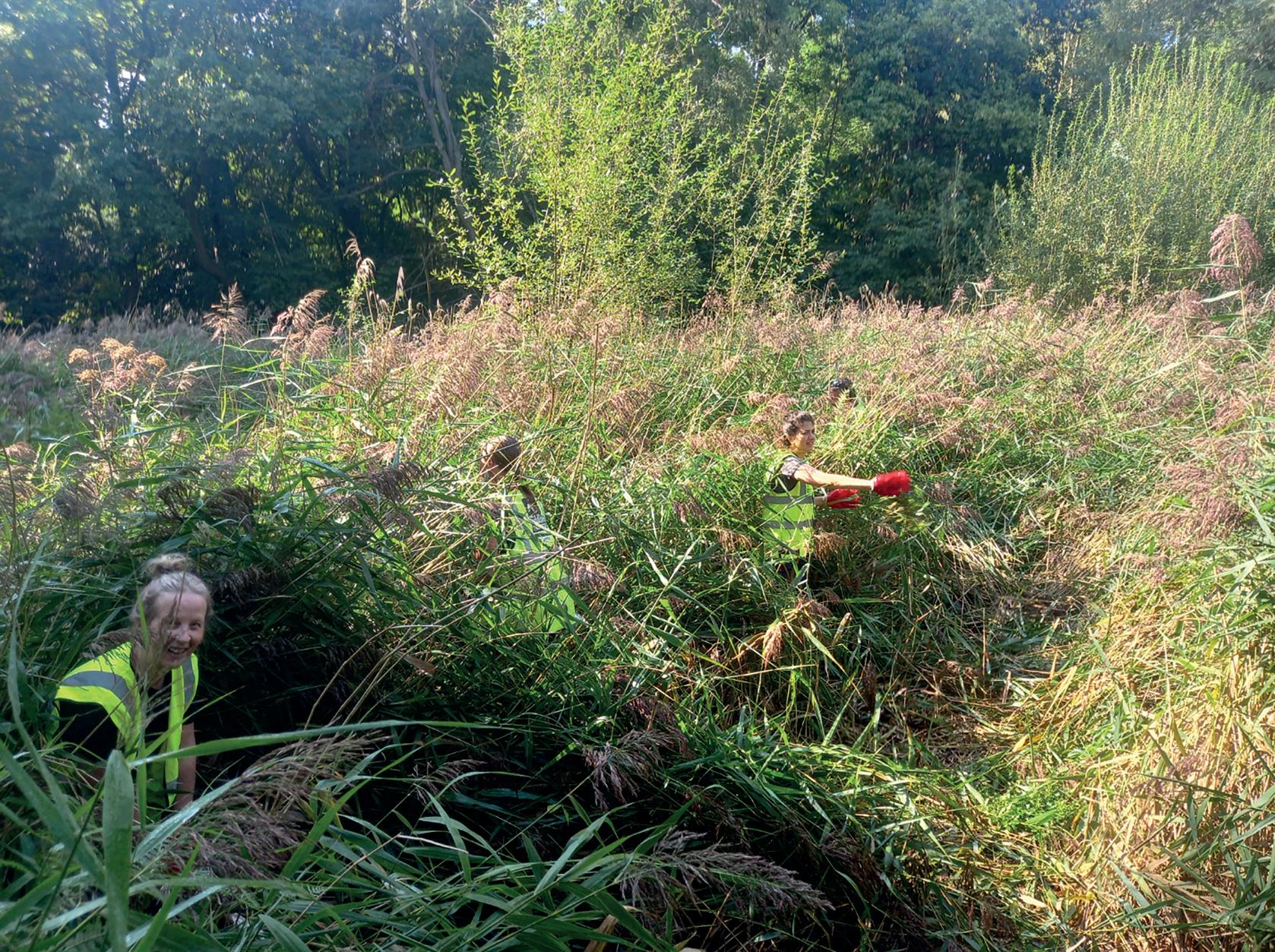
The pond was formerly the main storage pool for Sarehole Mill and was drained between 1843 and 1884 and left for the present-day habitat to develop. A fen is a transitional habitat which when left unmanaged will develop into a wet woodland just like the majority of the Nature Reserve. This development occurs through the encroachment of scrub species such as willow and alder, which dry out the area making it more hospitable for other species of trees to take over. As there is a scarcity of this type of habitat in the area and because it offers a home to a diverse range of species, human intervention is needed. In this case we maintain it through our hard-working volunteers.
Unfortunately, over the last couple of years due to complexities over the COVID pandemic, we haven’t been able to carry out the usual management tasks to the fen which has resulted in the scrub encroaching and starting to dry out the fen. This autumn teams of volunteers have been working in the fen digging out the willow and alder, which are trying to establish themselves. As alder is very resistant to water, the trees dug out have been turned into stakes and piled into the ground near springs to help channel the water into the area. The combination of this work has led to the fen becoming much wetter again, providing the right environment for vegetation such as wood horsetail, gypyswort, skullcap, meadowsweet and angelica, which will in turn support an array of wildlife. Patches of scrub and reeds have been left on the edge to allow for nesting sites for birds. The opening of the area will provide excellent bird watching opportunities from the overlooking viewing platform, especially during the winter months as the lack of tree canopy makes spotting birds
easier. Grey wagtails, wrens and jays are commonly been spotted here during working parties.
Now this work is complete we can now revert to a less intensive management approach where volunteers will cut back half of the reeds each winter to prevent any future encroachment of scrub.
We run weekly volunteer days at Moseley Bog & Joy’s Wood Local Nature Reserve alternating between Tuesday and Wednesdays 10:30 – 15:00 as well as the third Sunday of each month at the same time.
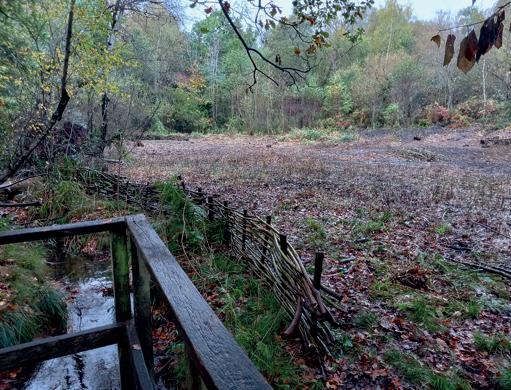
Find out more at bbcwildlife.org.uk/volunteer
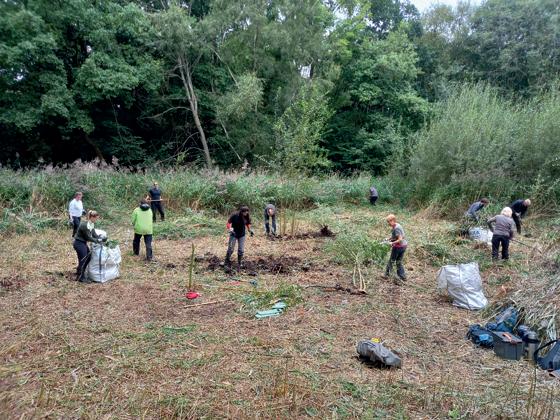
Did you know that Moseley Bog is actually a fen?
Staff Spotlight
Holly King Community Engagement
Hi, I’m Holly, I’m a Community Engagement Officer based at our EcoPark site in Small Heath. I have been working for the Trust since 2021 in this wonderful and varied role, helping local communities of all ages to explore nature. For many years, EcoPark was well used by local schools,
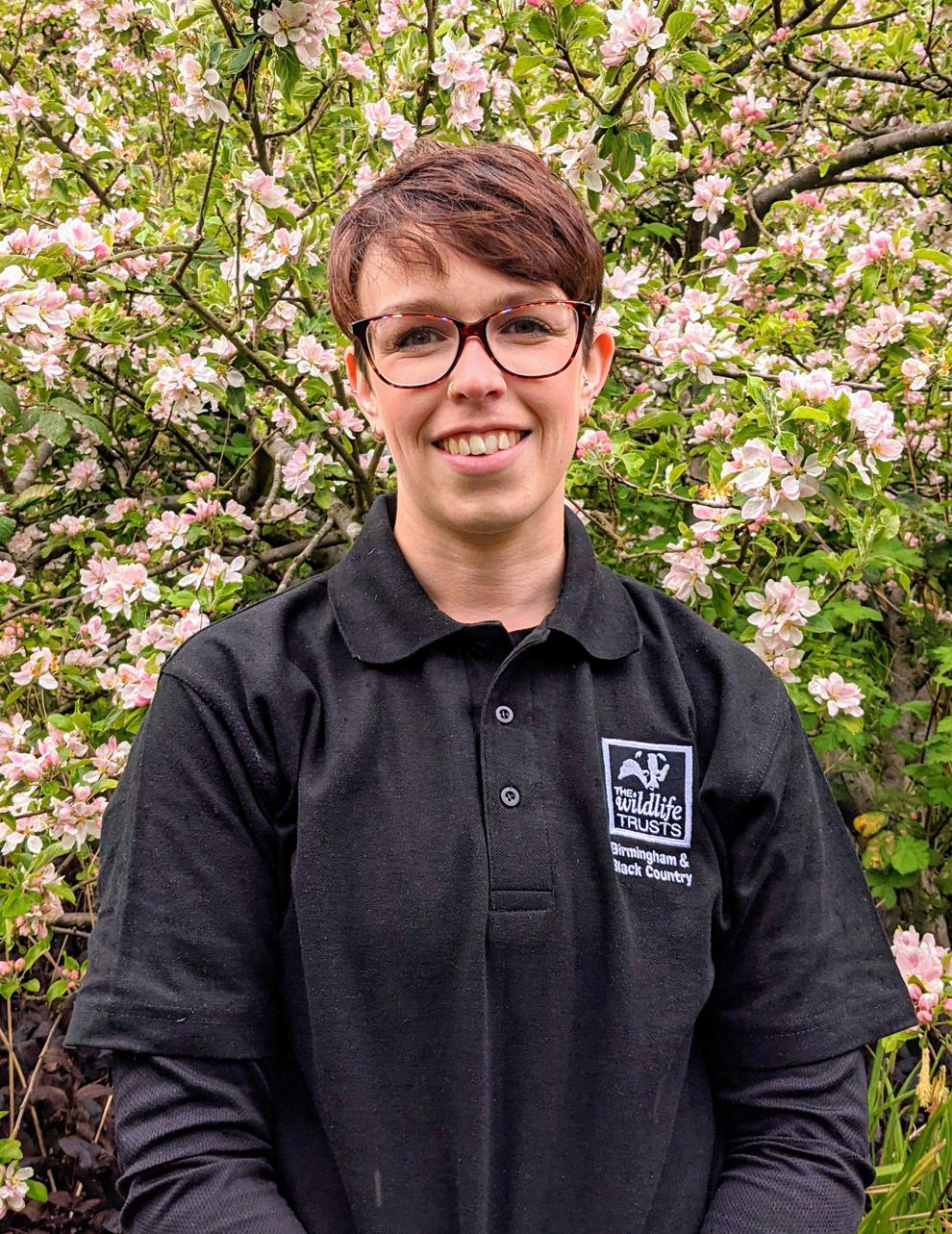
Officer
many of whom don’t have their own green space, and for our Growing Local Flora project, growing wild plants for use by community groups. While those two strands of activity continue, in my role (which is funded by National Lottery Reaching Communities) I'm helping to expand our horizons by connecting with as many groups as possible, creating a
space that is valued and ensuring that the diversity of east Birmingham and beyond is reflected in EcoPark.
I have always loved being outdoors, and outside of work I love walking and rock climbing. I can highly recommend clinging to a rock twelve feet off the ground with no ropes and just a crash mat to clear your head! In my first job
I very much braved all the elements, as a seasonal worker at ZSL London Zoo. However, it was a traineeship with The Conservation Volunteers (TCV) that really kick-started my career in conservation. After TCV I moved into Birmingham City Council’s Parks Ranger Service, working across south and west Birmingham from Woodgate Valley to Edgbaston Reservoir, and ending up at the Lickey Hills. Working at this unique and beautiful Country Park gave me a wealth of knowledge and experience, as well as lifelong friends, but I couldn’t pass up the opportunity to work for a Wildlife Trust, and especially not doing community engagement.
In Community Engagement every day is different and I work with a wide variety of people. I aim to ensure that my activities give people the best possible experiences in nature.
Most of my role involves working with children and young people, from delivering our Nature Tots programme which helps pre-school children explore the natural world around them to working with Special Educational Needs students from Heart of Birmingham Vocational College, delivering the nationally recognised John Muir award or supporting them with internships to prepare for the world of work.
I work with Cubs, Scouts, Beavers and Girls' Brigade groups and groups of young people who visit from The Prince's Trust for Explore Days. Plus every school holiday is jam-packed with family-friendly activities!
My work with adults includes leading litter picking walks along the River Cole and delivering our Introduction to Health and Wellbeing in Nature Courses which demonstrate the positive impact connecting with nature has on our physical and mental wellbeing. Many people have said to me, “your job sounds really fun!”. And I’m not going to lie, it really is.
ecaying trunks, rotting stumps, and fallen trees are all in hot demand. This prime real estate is home to a huge variety of wildlife. There’s a fantastic range of properties in our deadwood portfolio, from the high-rise to the sprawling single-storey. These habitats all play an important role in the nutrient cycle, help to lock up carbon, and even improve the stability of our soils. Interested in seeing the particulars? Then let’s go on a viewing and get to know the neighbourhood!

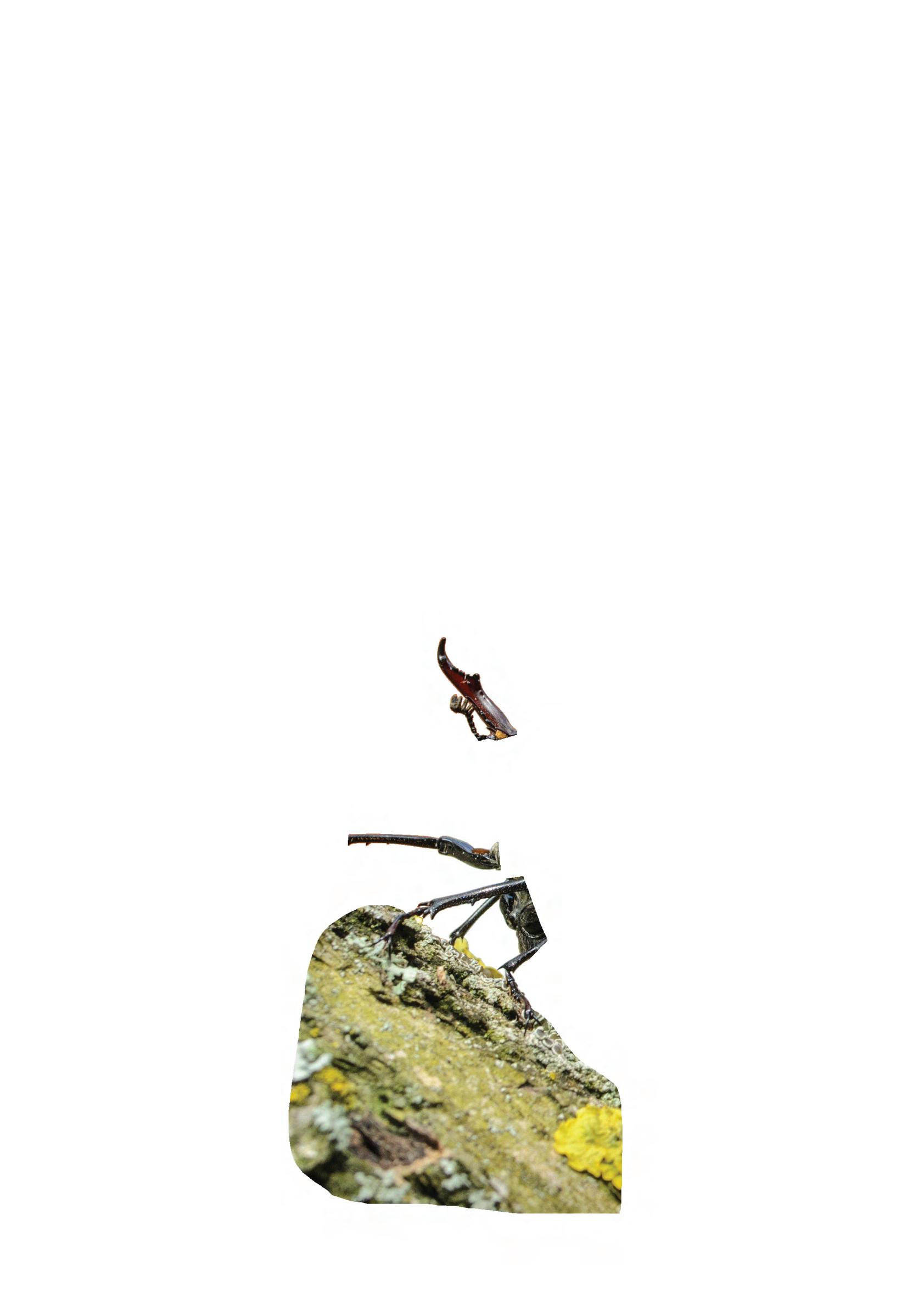
There’s a busy market for deadwood dwellings!STAG BEETLE © TERRY WHITTAKER/2020VISION, WOODEN SIGN © SITTIPONG_SRIKANYA, ISTOCK
Family-friendly environment
Neighbourhoods rich in dead and decaying wood are home to incredibly diverse communities. Many of the residents are invertebrates and fungi that play an important role in breaking down wood. A lot of them are entirely dependent on dead or decaying wood for at least part of their life cycle — we call this saproxylic. Some of our most recognisable insects are saproxylic.
The larvae of the majestic stag beetle favour basement locations in underground deadwood, whilst black and yellow longhorn beetle larvae are long-term tenants of fallen branches, taking up to three years to leave their home as adults. Finding the ideal location for a young family is also high on the house-hunting agenda for the batman hoverfly. It seeks out rot holes in trees where wet, decaying wood makes an ideal nursery. Fungi that thrive in these locations range from the delicate stalks of candlesnuff fungus to the chunky chicken of the woods.
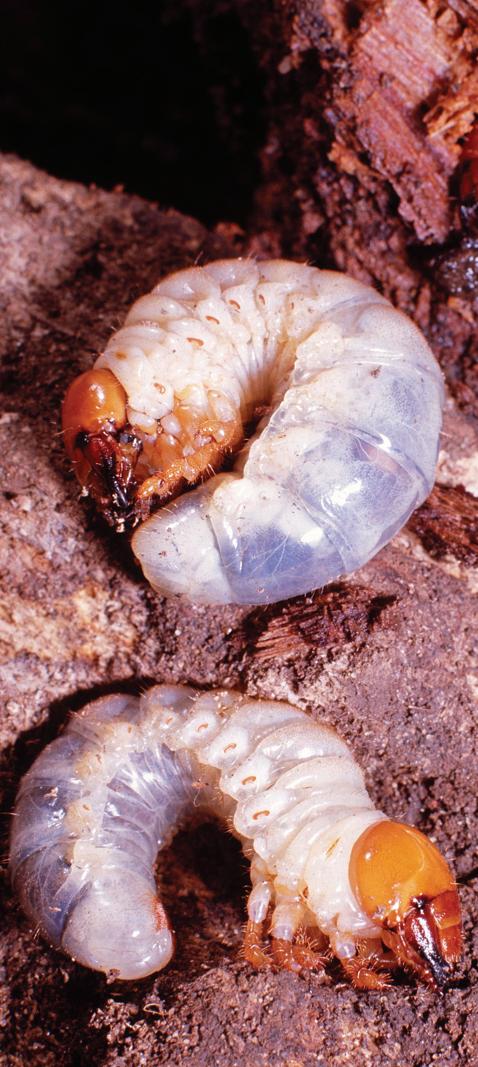
Location, location, location…
A third of all woodland birds nest in the hollows or cavities of dead trees. Great spotted woodpeckers drill their own holes, whilst nuthatches and tawny owls seek out existing gaps. Other birds of prey will use standing dead trees as a lookout post, or for somewhere to devour their prey.
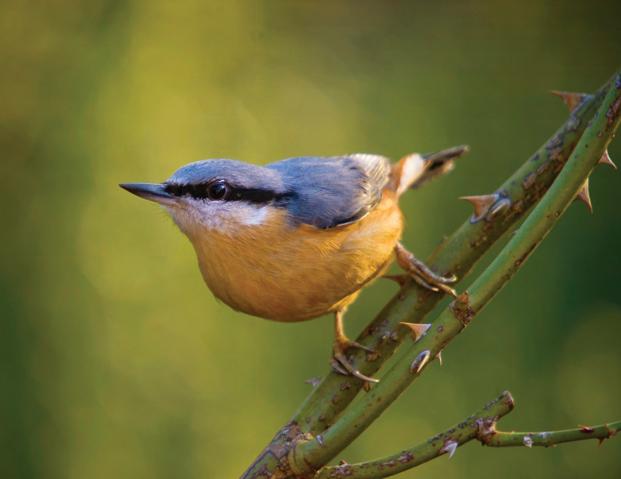
Many of our bat species search for trees with lots of character (cavities, rot holes, fissures, and splits) in which to roost. Our biggest bat, the noctule, isn’t put off by a pre-loved home. They often favour old woodpecker holes. The rare and elusive barbastelle bat, found only in woods with plenty of standing deadwood, often takes advantage of spaces behind lifted, flaky bark plates.
They are not alone in the vertebrate community in finding deadwood attractive. Through the seasons, many amphibians and reptiles will be taken with the charm of a log pile. Its amenities include shelter, a lookout point, somewhere to bed down, a sun lounger, and so many opportunities for eating out right on the doorstep — deadwood has it all!

On the water
It’s not just land-lovers who appreciate deadwood. Fallen logs in rivers can provide the perfect refuge for fish and a whole host of aquatic invertebrates. They can also be a spraint spot for an otter, or a perch for a kingfisher. They even act as natural dams and can slow the flow of a river or stream, reducing erosion and holding water back in times of heavy rain, helping to make the landscape more resilient.
Your next move
With 13% of all plants and animals known in the UK directly dependent on deadwood habitats, it’s a vital component of our landscapes. We must respect it, protect it, and seek to create more of it! Make a garden more appealing by creating a log pile. If you have a tree stump in the garden, leave it for your new wild neighbours to move into. Pop out the welcome mat and wait to see who turns up to the housewarming!
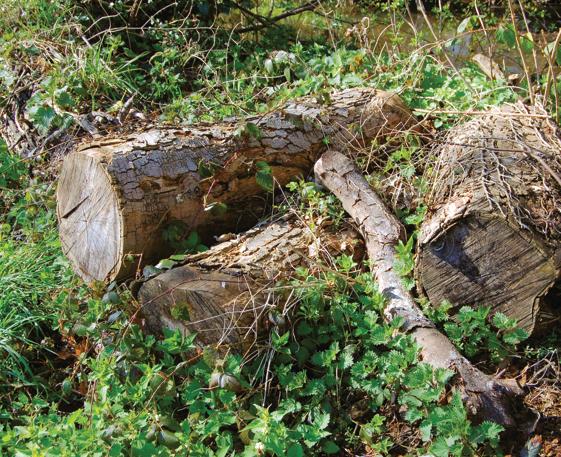
For tips on making a deadwood dwelling visit wildlifetrusts.org/log-shelter
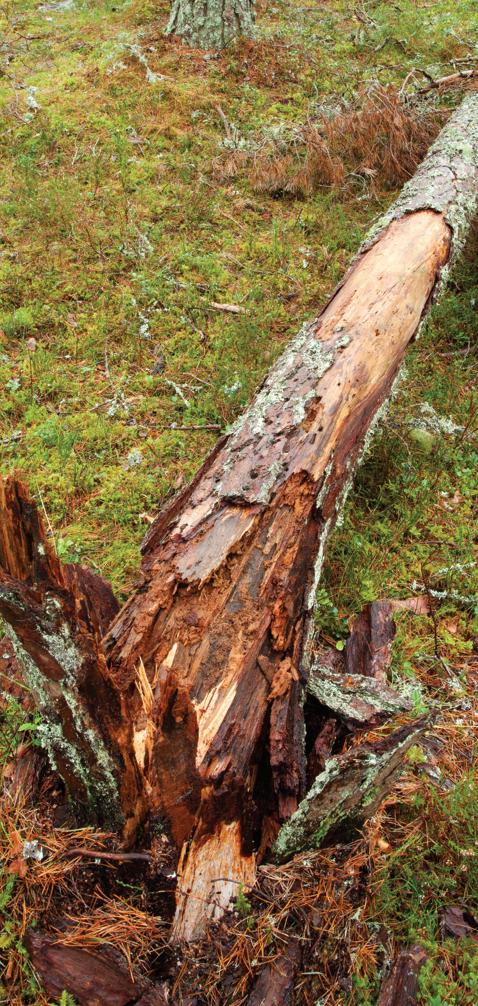 STAG BEETLE LARVAE © JANE BURTON, NATUREPL.COM; LOG PILE © SCOTT PETREK; FALLEN SCOTS PINE © MARK HAMBLIN/2020VISION; NUTHATCH © NEIL ALDRIDGE
STAG BEETLE LARVAE © JANE BURTON, NATUREPL.COM; LOG PILE © SCOTT PETREK; FALLEN SCOTS PINE © MARK HAMBLIN/2020VISION; NUTHATCH © NEIL ALDRIDGE
Beavers are making a comeback across the UK
You made the government give a dam!
ngland has taken a few tentative steps towards seeing a return of beavers to the wild, following new legislation announced by Defra. The legislation will provide legal protections for beavers in England, making it an offence to deliberately capture, kill, disturb, or injure beavers, or damage their breeding sites or resting places, without holding the appropriate license. The legislation is scheduled to come into force in the autumn.
These new protections could pave the way for beavers to be released into the wild in England under license, finally making a widespread comeback after being hunted to extinction in the 16th century. This decision echoes the path taken in Scotland, where beavers were declared a European Protected Species in 2019, affording them similar protections to those proposed in England.

The legislation was initially due to be laid in parliament on the 19th of July, but the UK Government held it up at the last minute. Following outrage from nature charities and the wider public, including lots of Wildlife Trust supporters, the decision was reconsidered and the announcement made just a few days later.
Beavers are ecosystem engineers. Their actions create thriving and dynamic wetlands that bring a wealth of benefits to both nature and people, including playing a critical role in adapting to a changing climate. Long-term studies of beavers from the Scottish Beaver Trial and in enclosures in England have demonstrated the improvements they can bring to our rivers and wetlands, making it clear that beavers belong in our landscape.
Commenting on the UK Government’s decision, The Wildlife Trusts’ chief executive Craig Bennett says: “The widespread return of wild beavers can be a game changer for restoring lost wetlands, benefitting all kinds of wildlife, and helping people by holding water back in the landscape, reducing the risk of wildfires and reducing the risk of flooding downstream. Bringing back wild beavers isn’t just a dream, it is a critical part of addressing the climate and nature crises.”
Whilst The Wildlife Trusts believe bringing back beavers is essential, reintroducing any ecosystem engineer is a delicate operation. Natural England is developing guidance on the management of beavers, setting out the actions that will or will not require a license. We are urging the UK Government to support ambitious and carefully targeted reintroduction projects, reward landowners who make space for wetlands created by beavers, develop management systems that protect beavers and resolve issues effectively, and support local beaver management groups to deliver advice and assistance.
The news of this legislation came as Wildlife Trusts around England celebrated the birth of beaver kits at enclosed projects on nature reserves. The Welsh Beaver Project, led by Wildlife Trusts Wales, also saw its first kit born at an enclosure at Montgomeryshire Wildlife Trust’s Cors Dyfi nature reserve.
Get the latest on our journey to bring beavers back to Britain at wildlifetrusts.org/saving-species/beavers
The beaver comeback
2001
Kent Wildlife Trust bring the first beavers back to Britain in an enclosure at Ham Fen.
2009
First beavers officially released into the wild by the Scottish Beaver Trial.
2014
Beavers discovered living wild on the River Otter in Devon. Devon Wildlife Trust begin England’s first wild beaver trial.
2017
The Scottish Beaver Trial release more beavers to reinforce the population
2019
Beavers designated a European Protected Species in Scotland.
2020
Beavers allowed to stay on the River Otter.
2021
Wildlife Trusts release a record number of beavers (17) into fenced areas across the Britain.
2022
Legislation announced to make beavers a protected species in England.
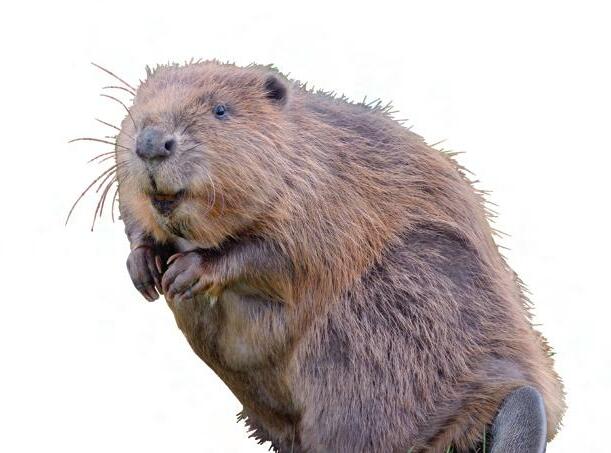
David Oakes Ancient trees
You start by entering your postcode. A few moments later you’re rewarded with a map. Your home at the epicentre, with every veteran, ancient, and potentially superstar tree marked accordingly, radiating outward from your front door. This is the Ancient Tree Inventory.


My map shows the remains of the medieval village of Marsden. My oldest neighbour is Tree #158744 — simply “’44” to me. It’s a pedunculate oak, over 6.5 metres in girth and easily 500 years old. Maybe 600. Maybe more… Chances are that it is the last living survivor of long-lost Marsden.
Type in your postcode and you may discover you live next to one of hundreds of ‘celebri-trees’: perhaps the Tolpuddle Martyrs’ sycamore that birthed the Trade Union movement? Or maybe John Evelyn’s black mulberry, supposedly planted by Tsar Peter I as an apology for his drunken antics! Who knows what these trees really saw, but what’s important is that they remain.
A tree isn’t just one organism, it’s a metropolis for life. My Marsden oak can support well over 1,000 species: birds, mammals, invertebrates, lichens, fungi, bryophytes… Every nook of our nation’s biodiversity. In fact, the pedunculate oak supports more unique species than any other of our native trees. And the longer they stay in the ground, the more interconnected they become with the life they support. The late, great, Oliver Rackham said: “Ten thousand oaks of one hundred years are no substitute for one five-hundred-year-old oak tree.”
Our ancient trees are often found within ancient forests that have existed since our very first maps. Some could stretch back as
far as the last ice age. Ever since, they have nurtured dense biological multi-species interactions. Without them, we’re just dusty skeletons living in housing estates. This summer, wildfires exacerbated by human behaviour burned across the globe and parts of the UK reached unprecedented temperatures of over 40 degrees. Ironically, the shade of a tree may be your best bet at remaining cool. Through transpiration, the area beneath a tree remains degrees cooler than a similar area shaded by a man-made structure. But even as the country cooked, bulldozers were poised to tear down ancient trees for the government’s high speed rail link.
The Cubbington Pear Tree, #74902 on the Ancient Tree Inventory, was voted the 2015 “Tree of the Year”. Over 250 years old, it was then the second oldest wild pear in the country, possessing a girth of almost four metres. Pear trees’ fruit and blossom harbour abundant mammal, bird, and invertebrate life. This tree, and the biodiversity it homed, was destroyed in October 2020 so that Birmingham could become 12 minutes closer to London. On the Ancient Tree Inventory, the Cubbington Pear Tree is now simply marked as “Lost”.
Every tree lost is a blow to nature. Every ancient tree lost expedites the collapse of our nation’s biodiversity. We have to protect these ancient treasures.
PUTTING TREES ON THE MAP
The Ancient Tree Inventory is run by The Woodland Trust and maps over 180,000 of the oldest and most important trees in the UK. You can explore the trees near you, or add your own special trees, at ati.woodlandtrust.org.uk
Construction work for HS2 continues to damage and destroy irreplaceable habitats. Find out more and how you can help at wildlifetrusts.org/hs2
David Oakes is an actor, podcaster, and ambassador for The Wildlife Trusts. When he’s not on set or treading the boards, he’s out walking in a glorious wild place talking to experts about the natural world and celebrating it in his podcast, Trees A Crowd

ravens 6 places to see
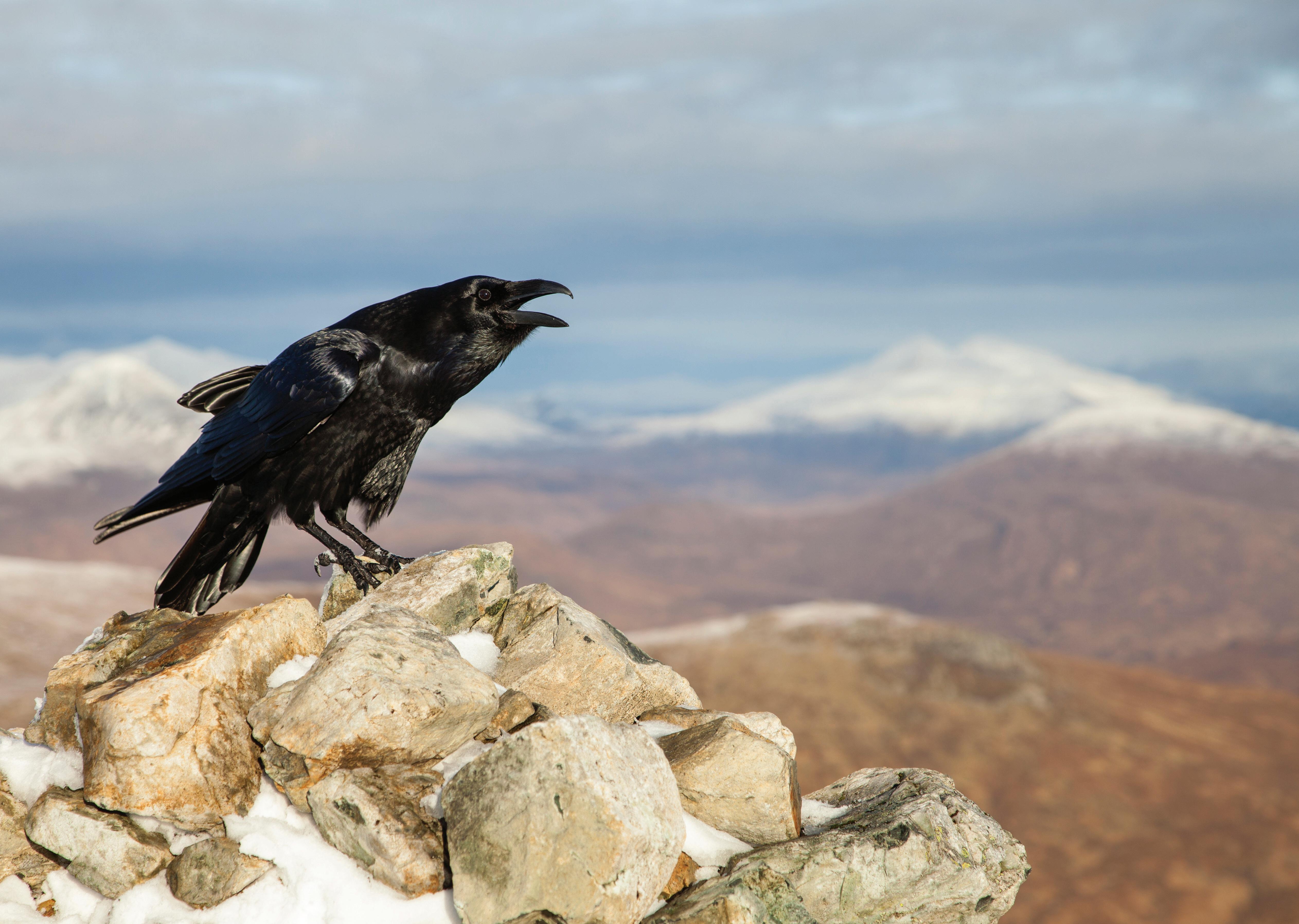
avens are the largest members of the crow family, as big as a buzzard. They were once found across the UK, but persecution reduced them to small populations in the north and west. Fortunately, ravens have made an incredible comeback and can be seen more widely again, though they are still rarer in the east of England and Scotland. They’re often encountered in uplands and on coastal cliffs. You can tell a raven from a crow by its heavier bill, thicker neck, and hoarse, cronking call. In flight, they have a distinctively diamond-shaped tail. On winter evenings, ravens gather in communal roosts that can include hundreds of birds. These are often young ravens, as breeding pairs are busy holding their nesting territory. Look out for their tumbling, acrobatic display flights in late winter and early spring.
See the spectacle for yourself
1 Whitelee Moor, Northumberland Wildlife Trust
Large numbers of ravens can be seen on this moorland nature reserve. The open skies are also great for spotting birds of prey like peregrine falcons and buzzards. You can sometimes find a herd of feral goats on the border with Kielderhead. Where: Byrness, NE19 1TZ

2 Howe Ridding Wood, Cumbria Wildlife Trust
This ancient woodland is home to a winter roost of ravens, with up to 30 of the cronking corvids often seen over the nature reserve. Other impressive birds you could spy include buzzards and sparrowhawks.
Where: Between Kendal and Grange over Sands, LA11 6SB
3 Blacka Moor, Sheffield & Rotherham Wildlife Trust
Ravens are a common sight on this spectacular stretch of moorland and woodland, part of the internationally important wild landscape of the Eastern Peak District Moors. As you search for ravens, keep an eye out for the more easily spotted red deer — the UK’s largest land mammal. Where: Near Sheffield, S11 7TY
4 Silent Valley, Gwent Wildlife Trust
An ancient woodland sanctuary in the South Wales Valleys. With panoramic views across the Ebbw Valley, there’s plenty of sky to scan for the distinctive silhouette of a raven. The nature reserve also boasts Britain’s highest beech wood! Where: Ebbw Vale, NP23 7RX
5 Cwm Colhuw, Wildlife Trust of South & West Wales
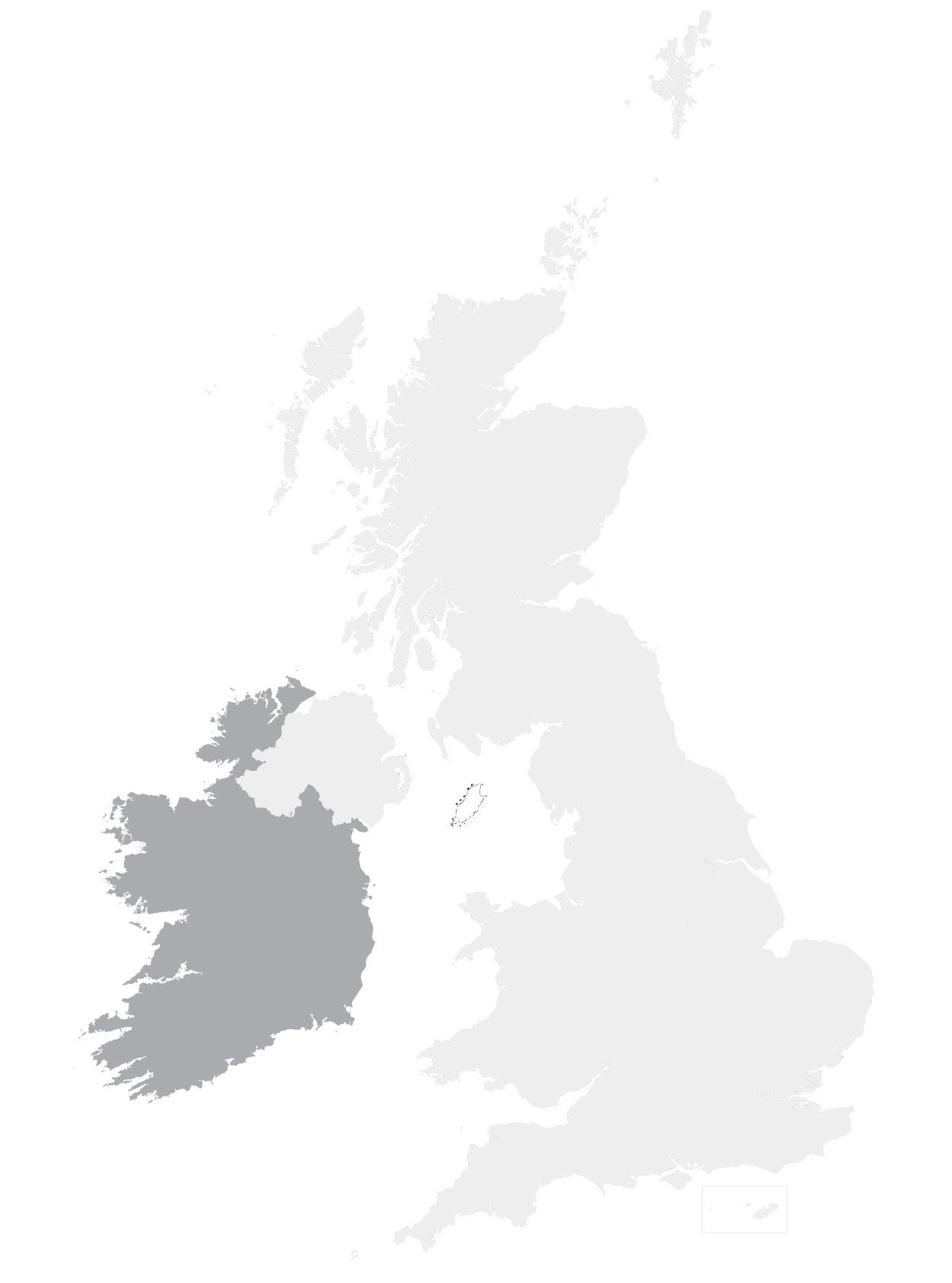
This mix of grassland, woodland, and scrub is a great place to see the ravens that live on the Glamorgan Heritage Coast. You might also spot a peregrine plunging after prey or a kestrel hovering over the grassland.
Where: Llantwit Major, CF61 1RF
6 Riverside Valley Park, Devon Wildlife Trust
You don’t have to travel to rural areas to see ravens! They’re a daily sight at this park close to the centre of Exeter. Here they perch on pylons rather than rugged cliffs. Where: Exeter, EX2 6LT
Did you spot any corvids?
We’d love to know how your search went. Please tweet us your best photos! @wildlifetrusts
Members Page
Send us your questions, photos, stories or exciting wildlife encounters and we’ll share our favourites! Email comms@bbcwildlife.org.uk
Out for Nature
We were delighted to attend this year’s Birmingham Pride event in September. It was great to see old friends and new, stand alongside colleagues from other Wildlife Trusts, as well as other wonderful local organisations, and proudly say “we’re wild about inclusion”!
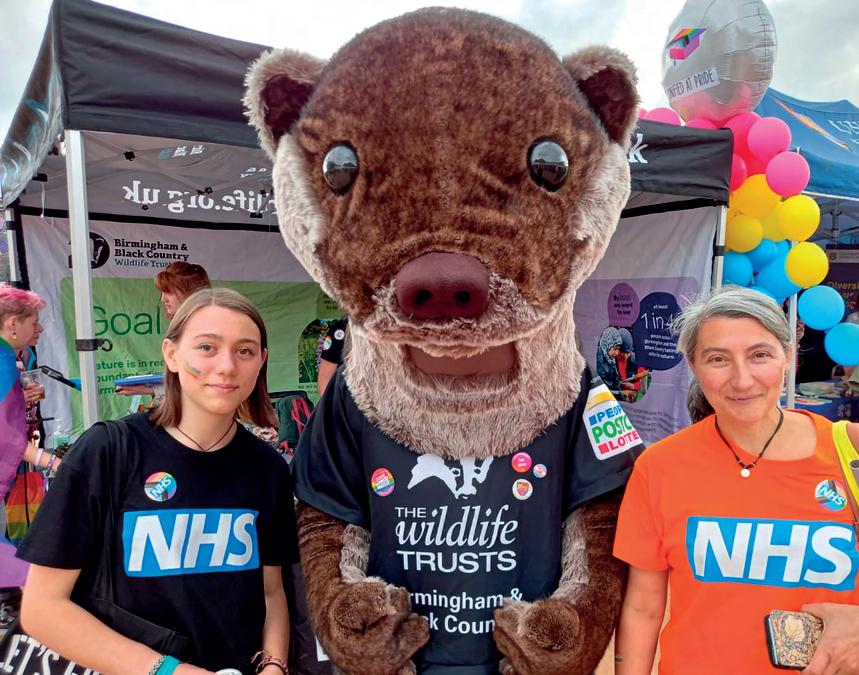
It was especially nice to meet a number of our members on the day, including Emma and Elinor pictured here!
Looking
Back…
and Looking Forward
However long you’ve been a member, you have made a real difference to the wildlife in our area this year. Back in the spring, we launched our ambitious new strategy. One of our goals is for 500ha of land to be improved for wildlife in our area by 2030, and the support from our members is vital as we push forward and aim for this. So if there is any way that you feel able to donate a little bit more to your membership, please do contact us on 0121 523 0094 or email membership@bbcwildlife.org.uk and we will be delighted to help. If, however, things are a bit tight, we completely understand.
Mini-pond Creation!
In October we joined colleagues from Walsall Housing Group at their annual conference, delivering presentations on wildlife-friendly gardening which inspired Sarah, who became a member on the day, to create her own mini-pond! Sarah joined us as a member at the conference and sent us this great photo of her newly created wildlife pond – well done Sarah!
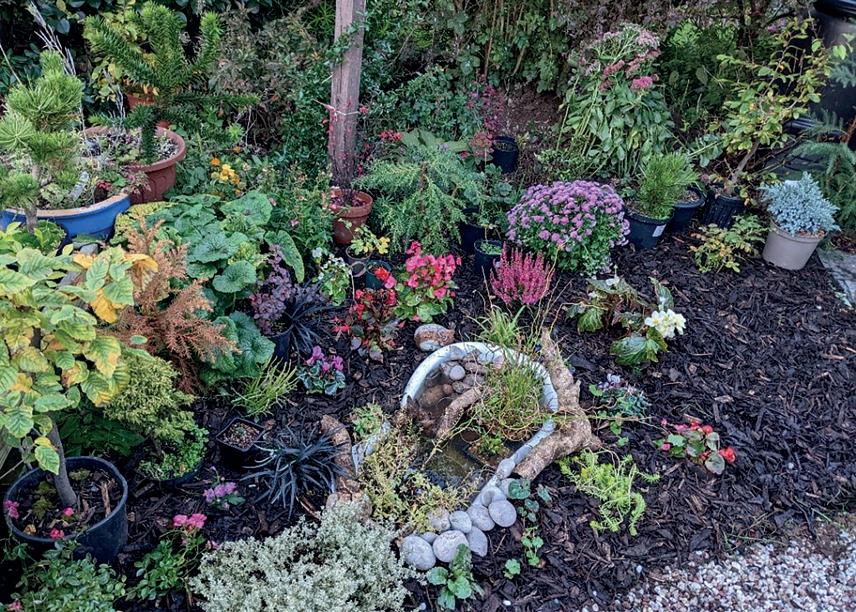
Upcoming Events –Save the date(s)!
On Monday 16 January (sometimes called Blue Monday), turn those January frowns upside down with a fun quiz night
In February, we welcome skull and bone enthusiast, Ric Morris, for an exclusive member-only event as he presents ‘Confessions of a Teenage Skull Collector.’ More details to follow.
All the details are currently being confirmed and we will publish more details in the very near future so watch this space.
You can keep up to date on these and many other events on our website, or by keeping an eye on our monthly e-newsletter.
Wear it for Wildlife!
We’re very excited to launch a brandnew range of wildlife-themed clothing, including t-shirts for all the family, as well as accessories! By buying and wearing one of our 100% organic cotton garments, you’ll be showing off your love for Birmingham and the Black Country’s wildlife and wild spaces, whilst also contributing to their protection! Every item is shipped in plasticfree packaging and we can’t wait to see them being worn!
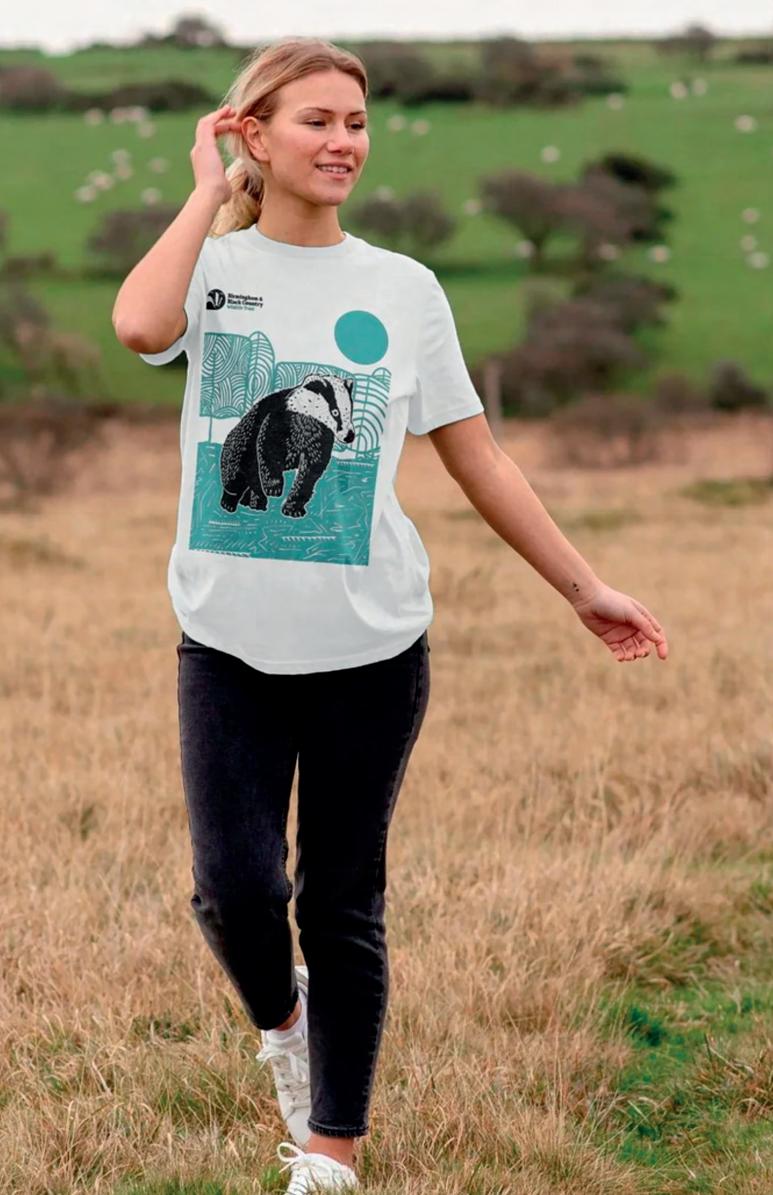

Head to bbcwildlifetrust.teemill.com to browse our store!

For the botanists in your life. This trailblazing publication that shows Birmingham and the Black Country's incredible diversity of plant life, with the number of species found representing nearly half of the flora found in the UK.
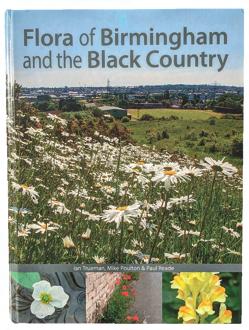
Organic Co on gi s from £14**

Wear your support with men, women and children’s t-shirts plus tote bags with stylish wildlife designs. Made from 100% organic cotton and printed in the UK in a renewable energy powered factory. Provided by teemill.com



Wildlife ID Guides £5*
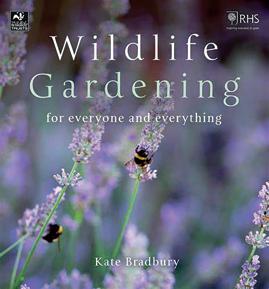
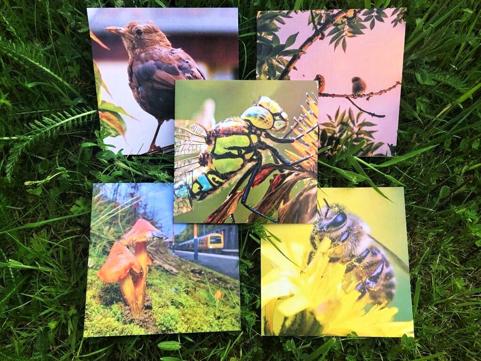
These foldout weather-proof ID guides are the ideal gift for budding naturalists looking to improve their identification skills. Choose from Top 50 Garden Birds, Guides to Bees of Britain, Guide to Butterflies of Britain, Guide to Woodland Plants, Dragonflies and Damselflies, Mammal Tracks and Signs and Tree Name Trail.
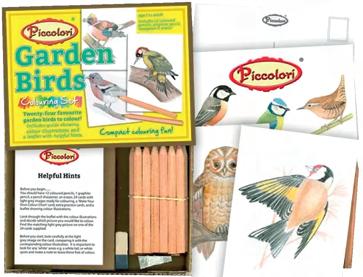
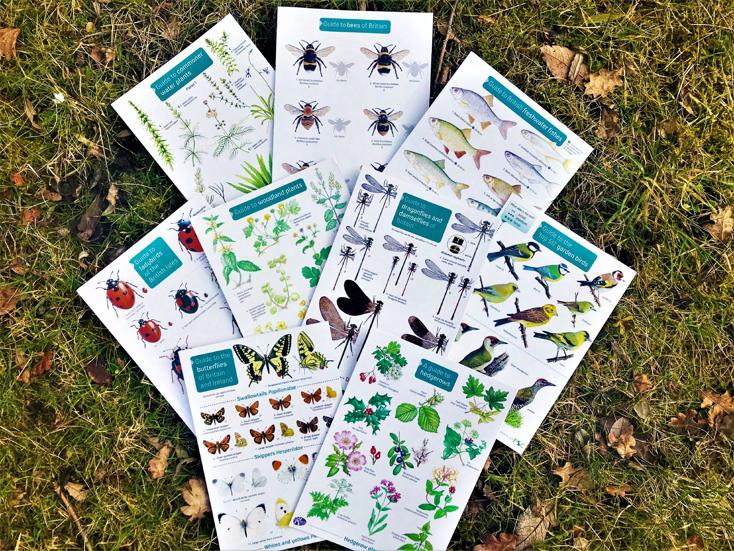
Insect Origami £20*
These paper toys, made from 100% recycled paper are a great gift for craft lovers. Choose from Ladybirds, Dragonflies, Rhinoceros Beetles or Bees plus a hand-written Christmas card confirming your donation in their name.

The Wildlife Pond Book £14.99
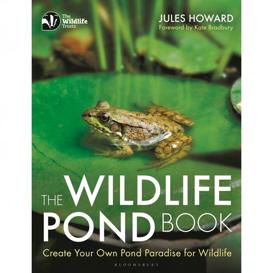
Jules Howard offers a fresh perspective on ponds and encourages gardeners to reach for a garden spade and do something positive to benefit our shared neighbourhood nature.
*Delivery calculated at checkout. Please enquire for delivery outside the UK. **Delivery calculated at checkout. Teemill.com orders over £50 qualify for Free UK Shipping









